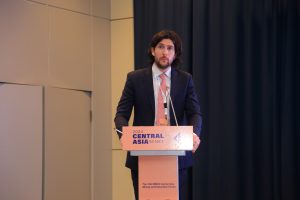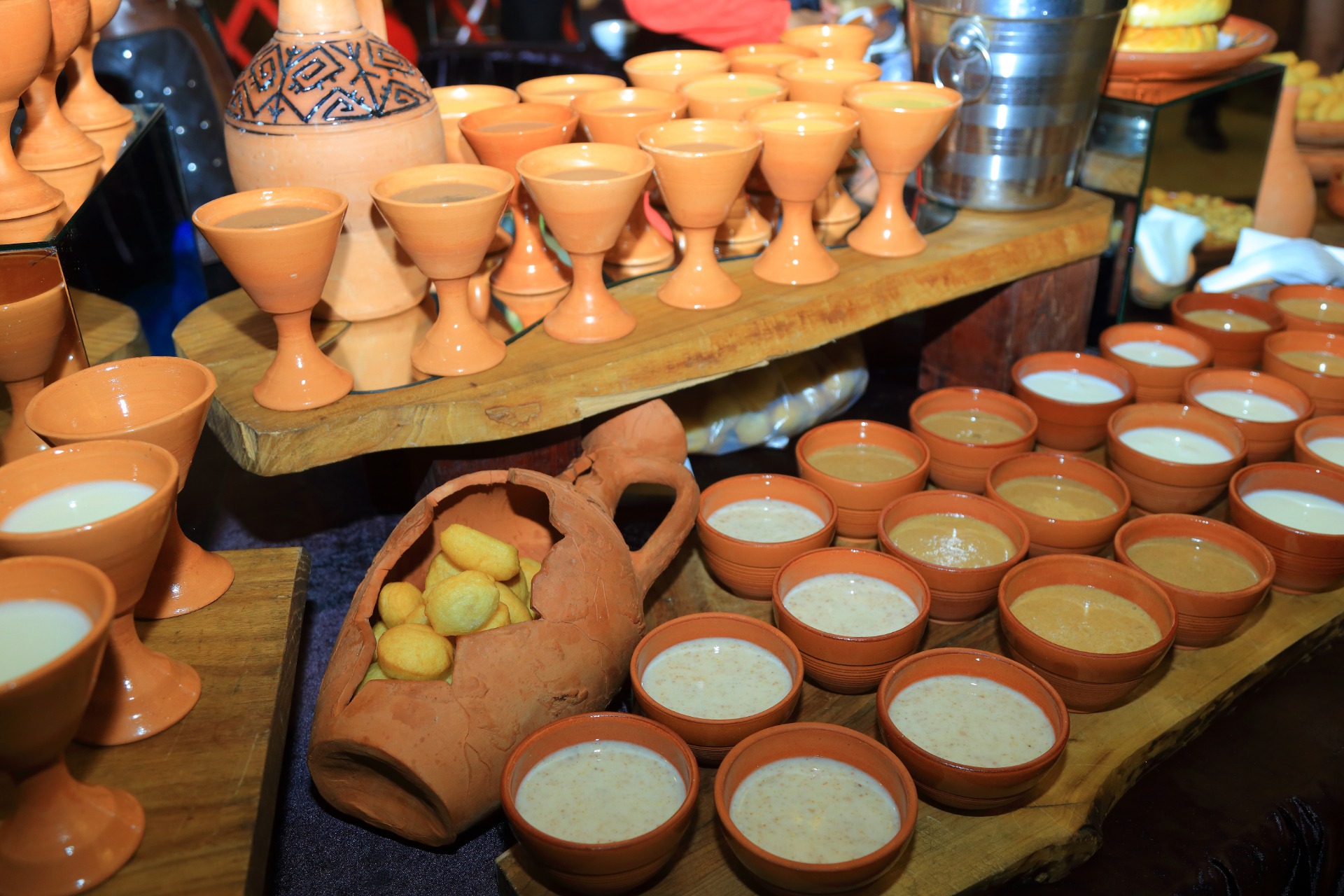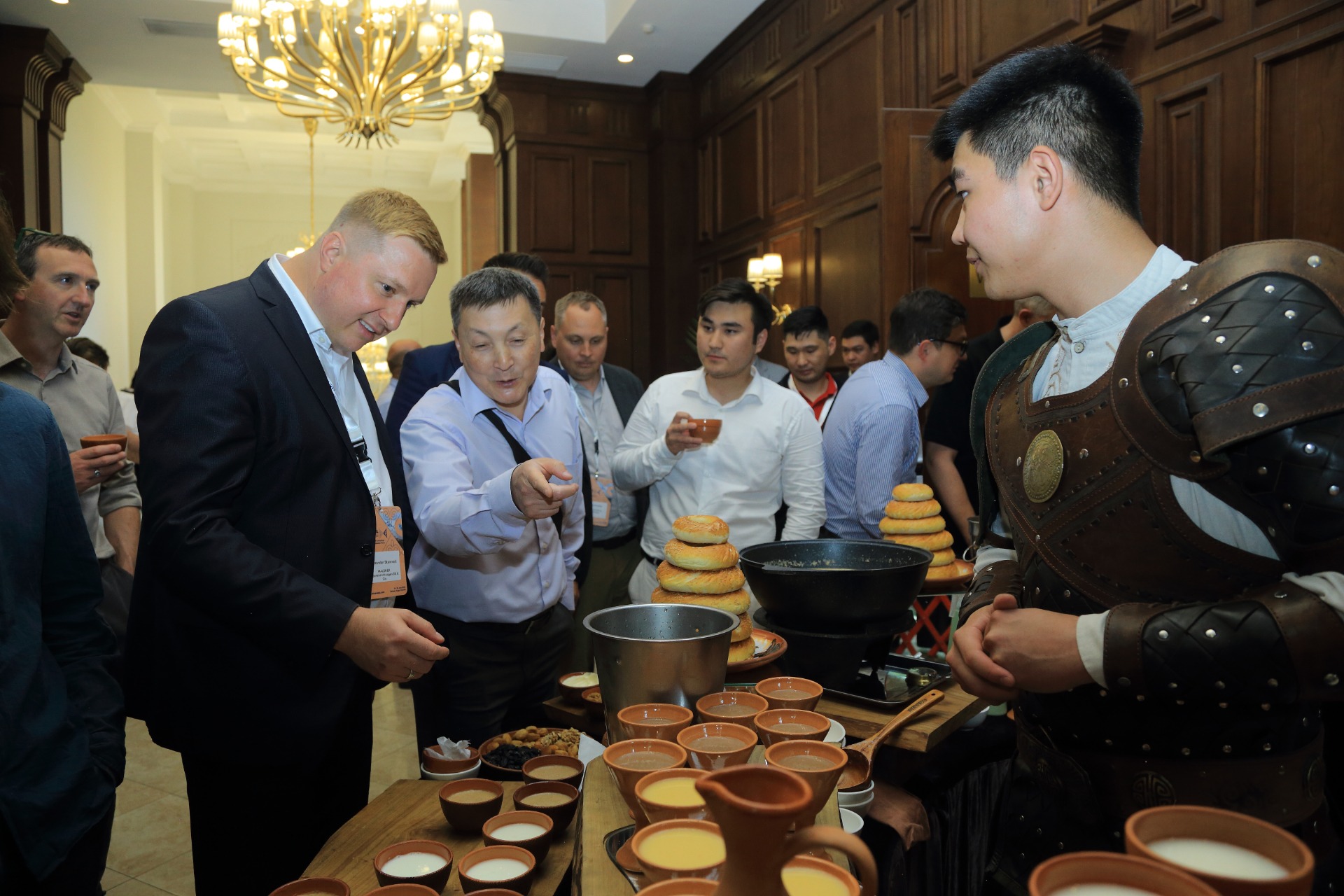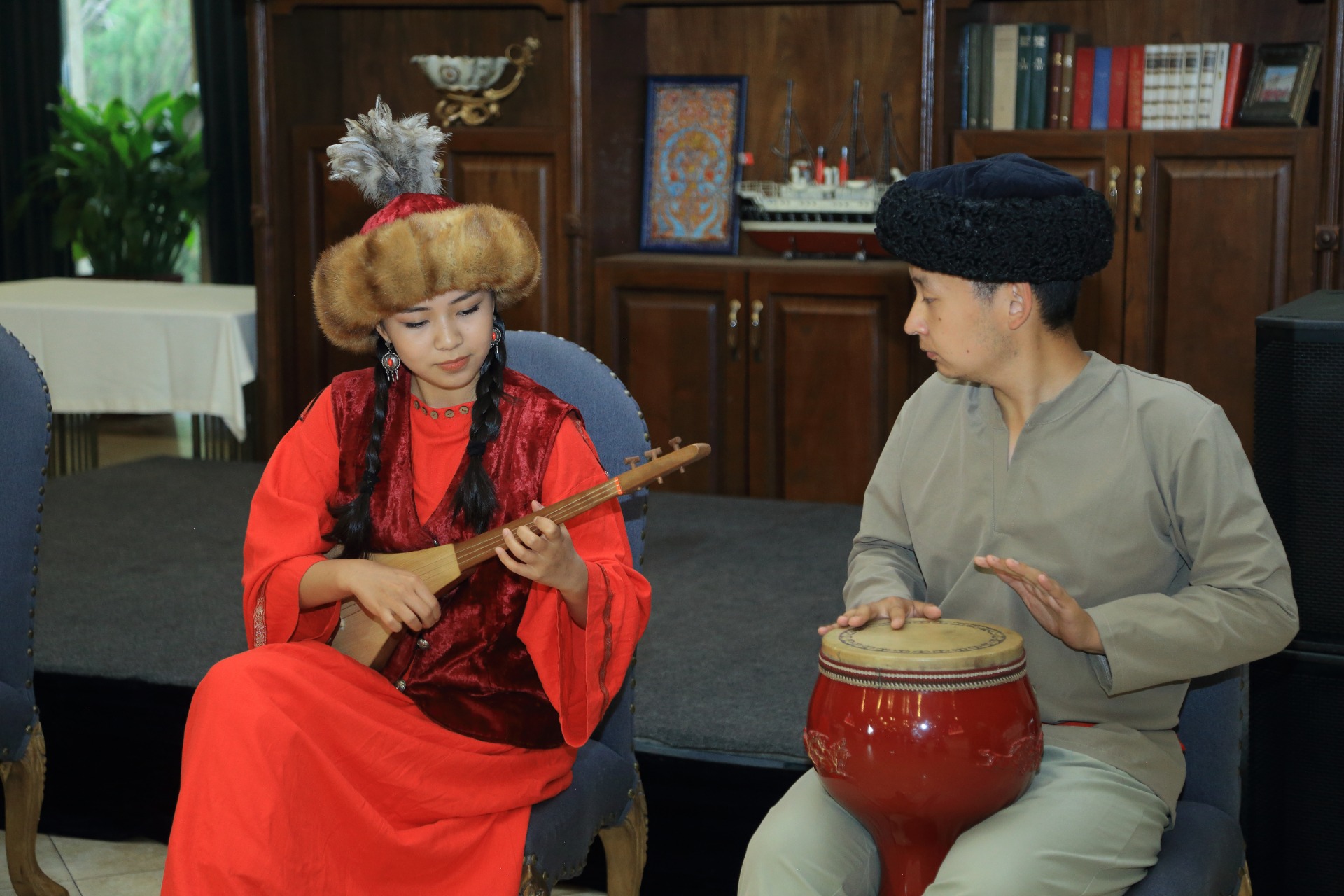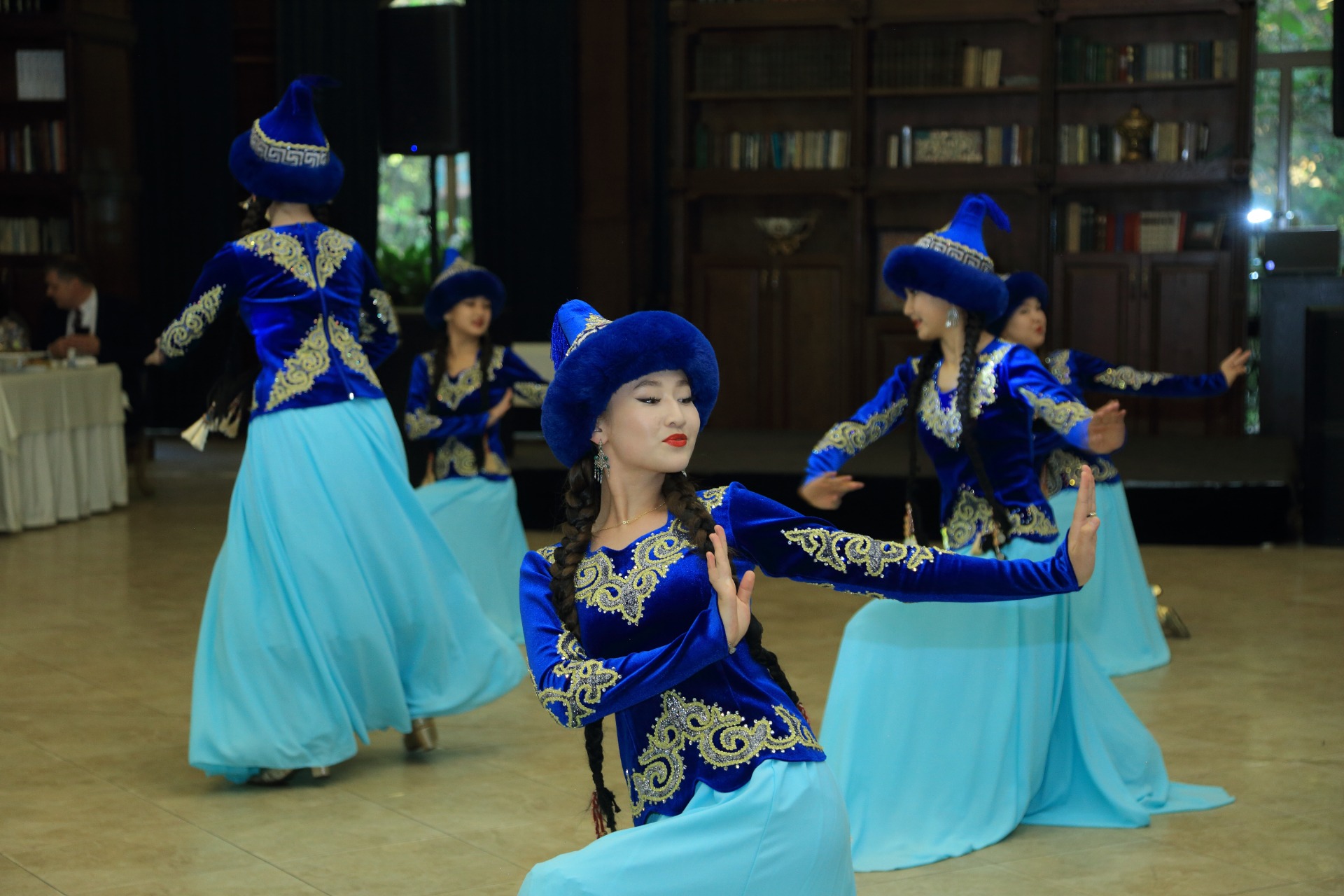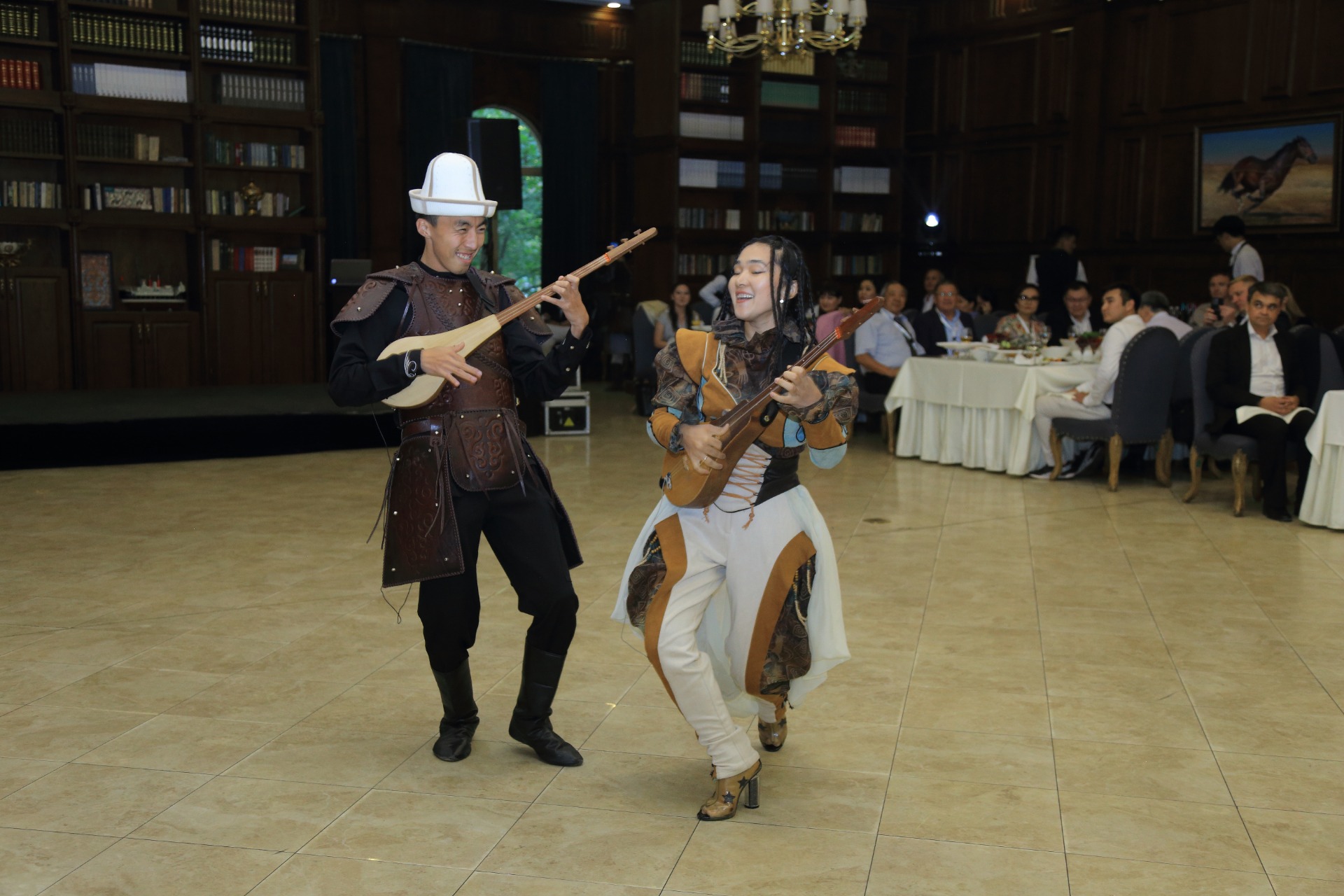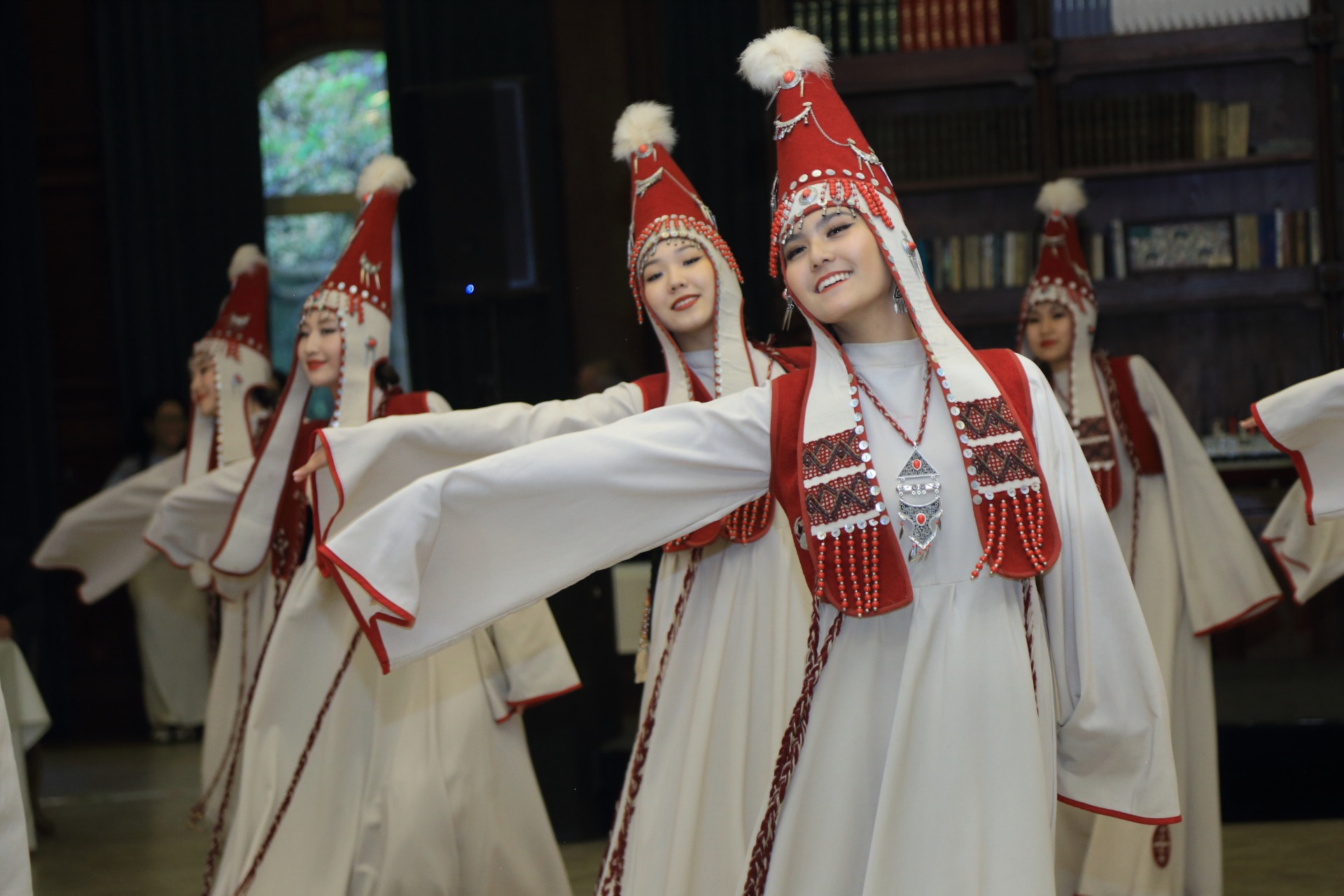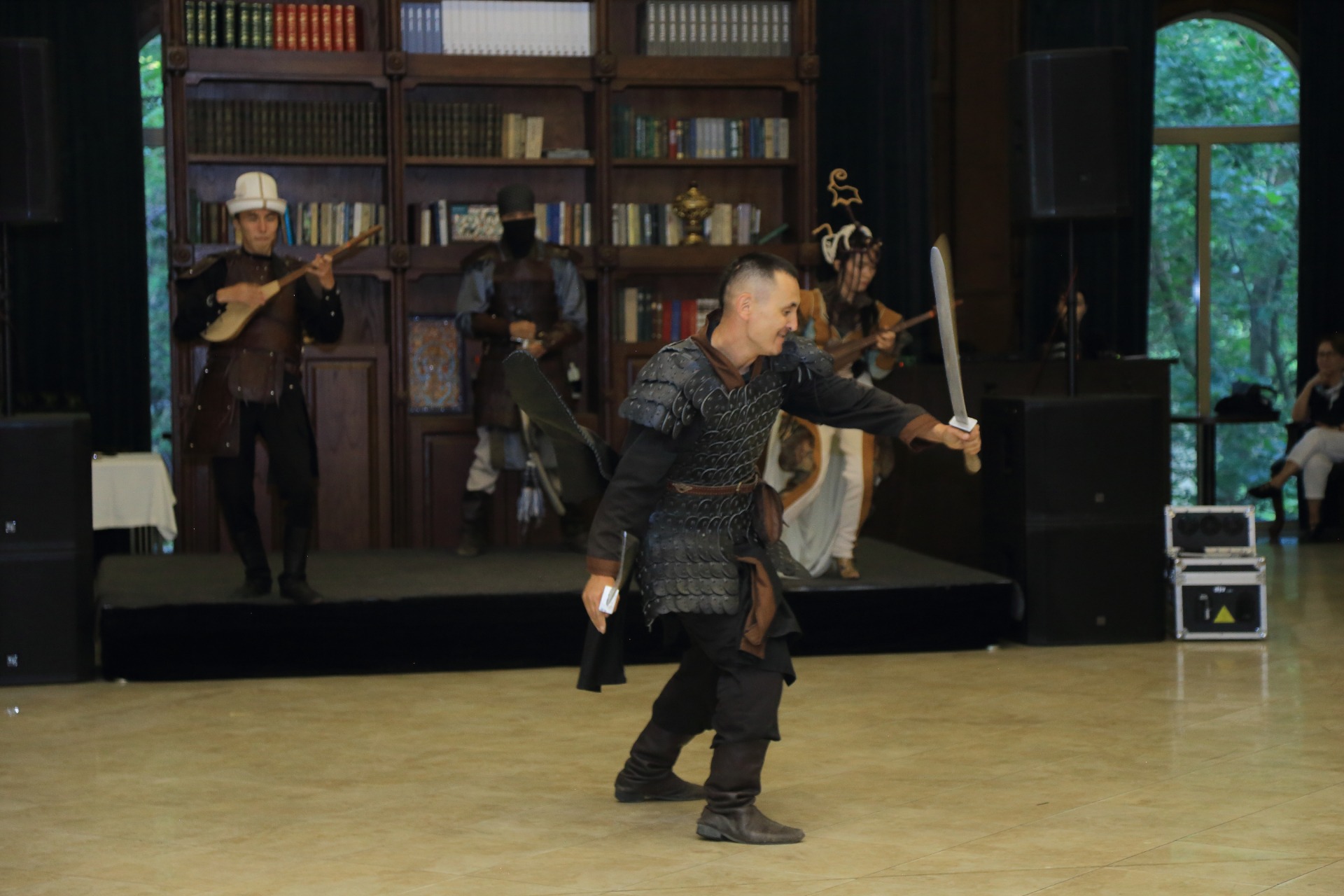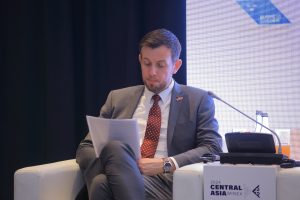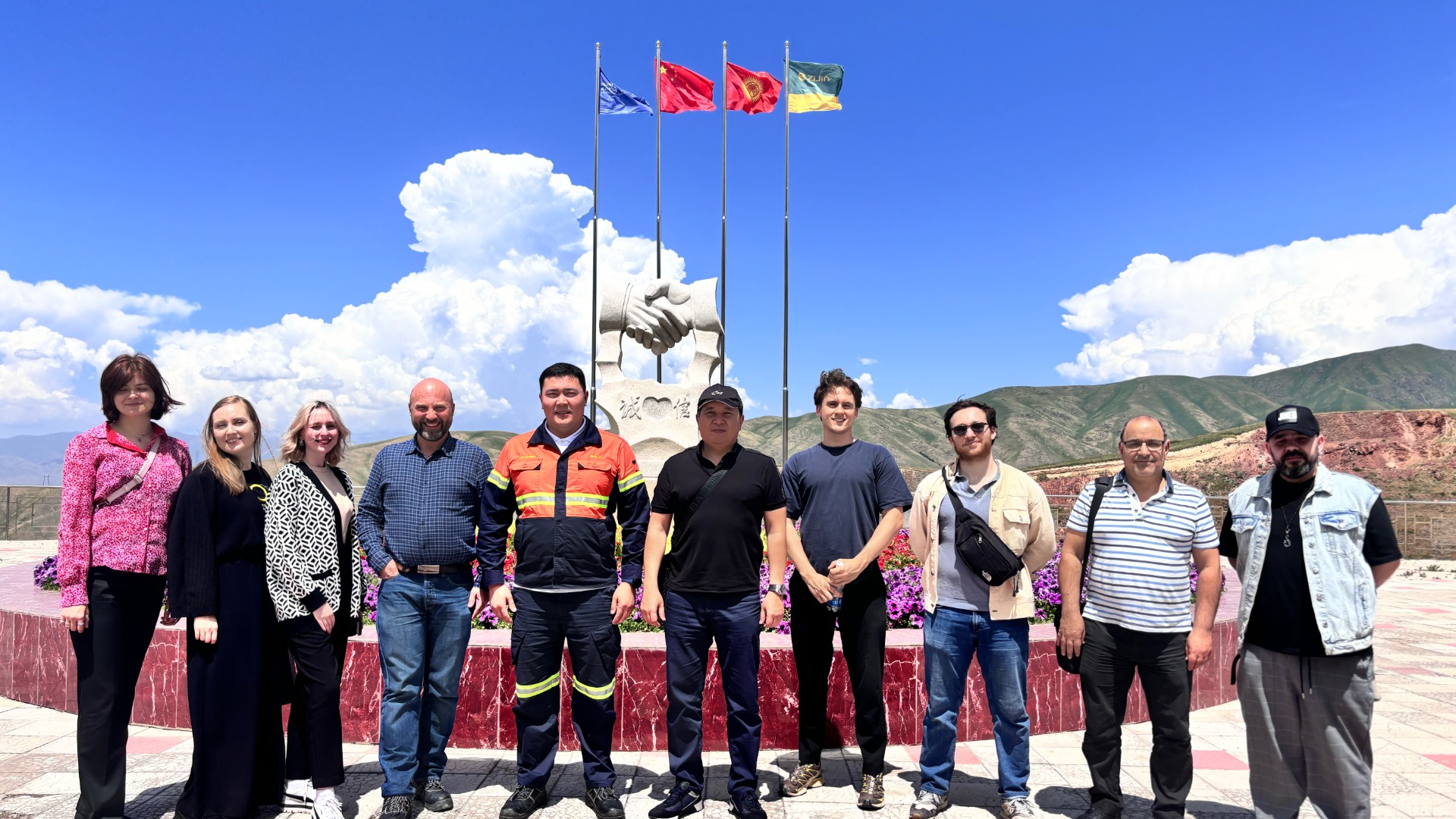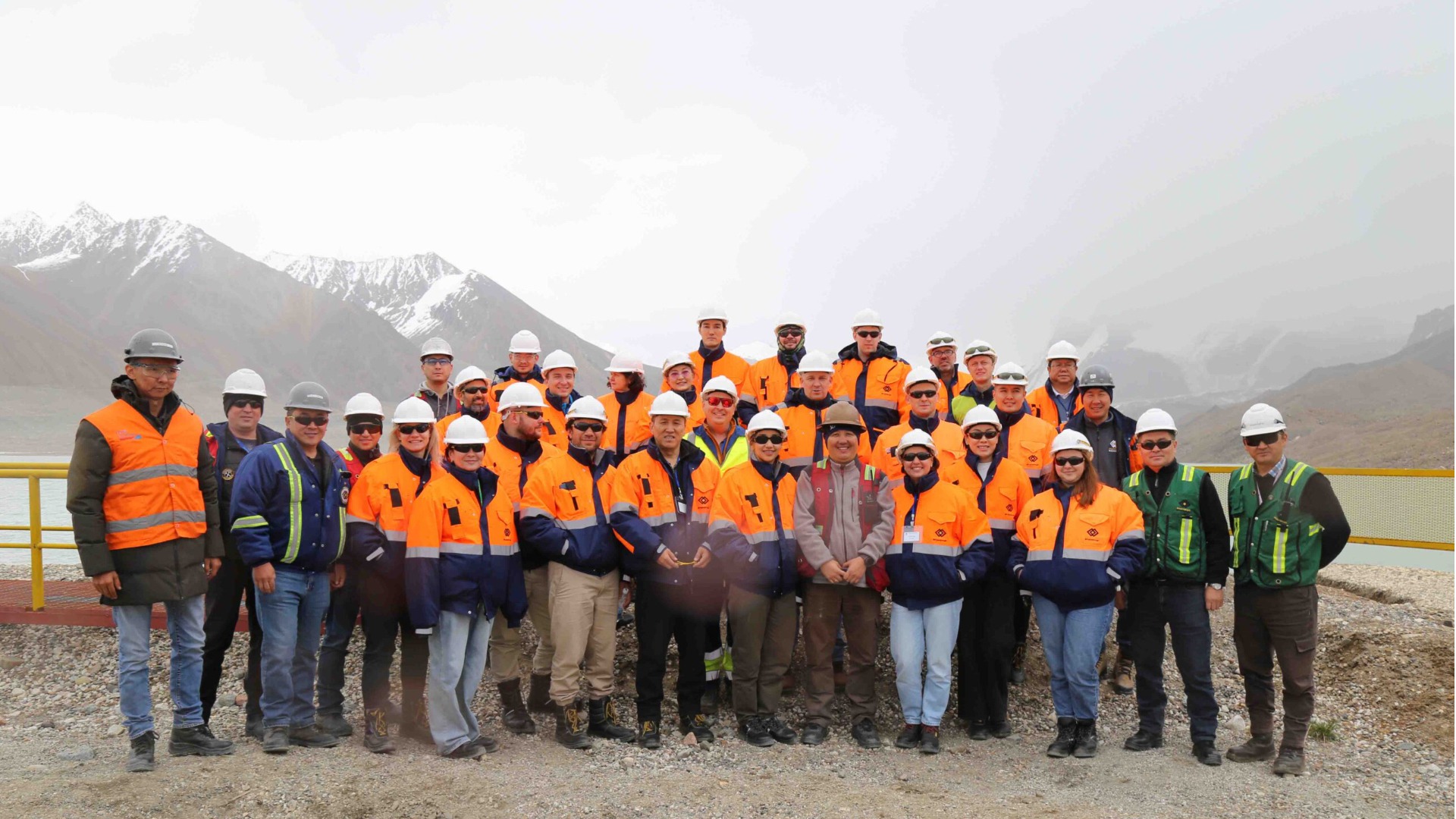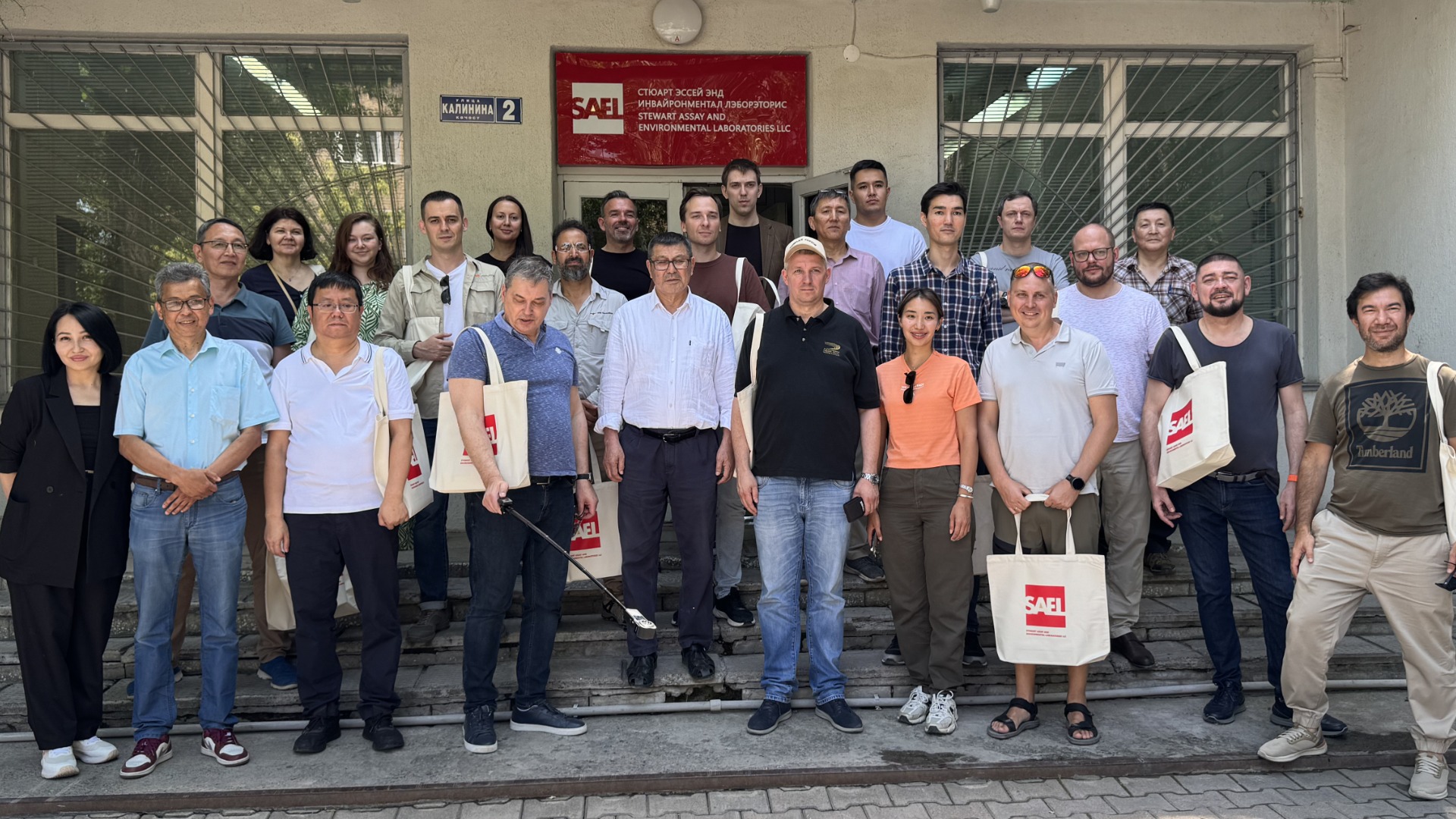Attracting foreign investment and implementing cutting-edge technologies are essential for maintaining competitiveness in the mining sector. Given that only a fraction of the metals mined in Central Asia are processed locally, the future of the mining industry in the region is tied to establishing “industrial hubs,” technology parks, and free economic zones. The session will offer a platform to showcase projects aimed at developing value-added production in Central Asian countries and to discuss the prospects for international trade and economic relations.
Post-event summary
Post-event summary
Post-event summary
Post-event summary
Post-event summary
MINEX Central Asia 2024
MINEX Central Asia 2024
MINEX Central Asia 2024
MINEX Central Asia 2024
MINEX Central Asia 2024
The 10th Mining and Exploration Forum “MINEX Central Asia” was held in Bishkek on 19-20 June 2024
”The Forum brought together over 300 representatives from 148 organisations and companies from 24 countries to discuss the future and scenarios for sustainable development of the mining industry in Central Asia.
The Forum, held under the theme “Future and Scenarios for Sustainable Development of the Mining Industry in Central Asia”, was organised in partnership with the Ministry of Natural Resources, Ecology and Technical Supervision of Kyrgyz Republic.
Speakers
57
Participants
300
Countries
24
Organisations
148
Exploring and Learning
The Forum explored the prospects for sustainable development of the mining industry in Kyrgyzstan, Kazakhstan and Uzbekistan, as well as the possibilities for more eco-friendly practices in the sector.
Learn More
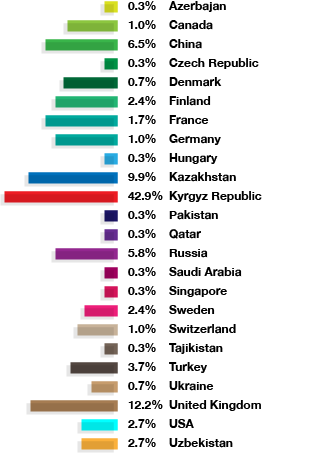
19 JUNE
FIRST
DAY
Speakers welcomed the Forum participants on behalf of their Government, emphasising the commitment to supporting the country’s mining sector growth through partnerships, technology, and education.
Open Forum photos
Open Session photos
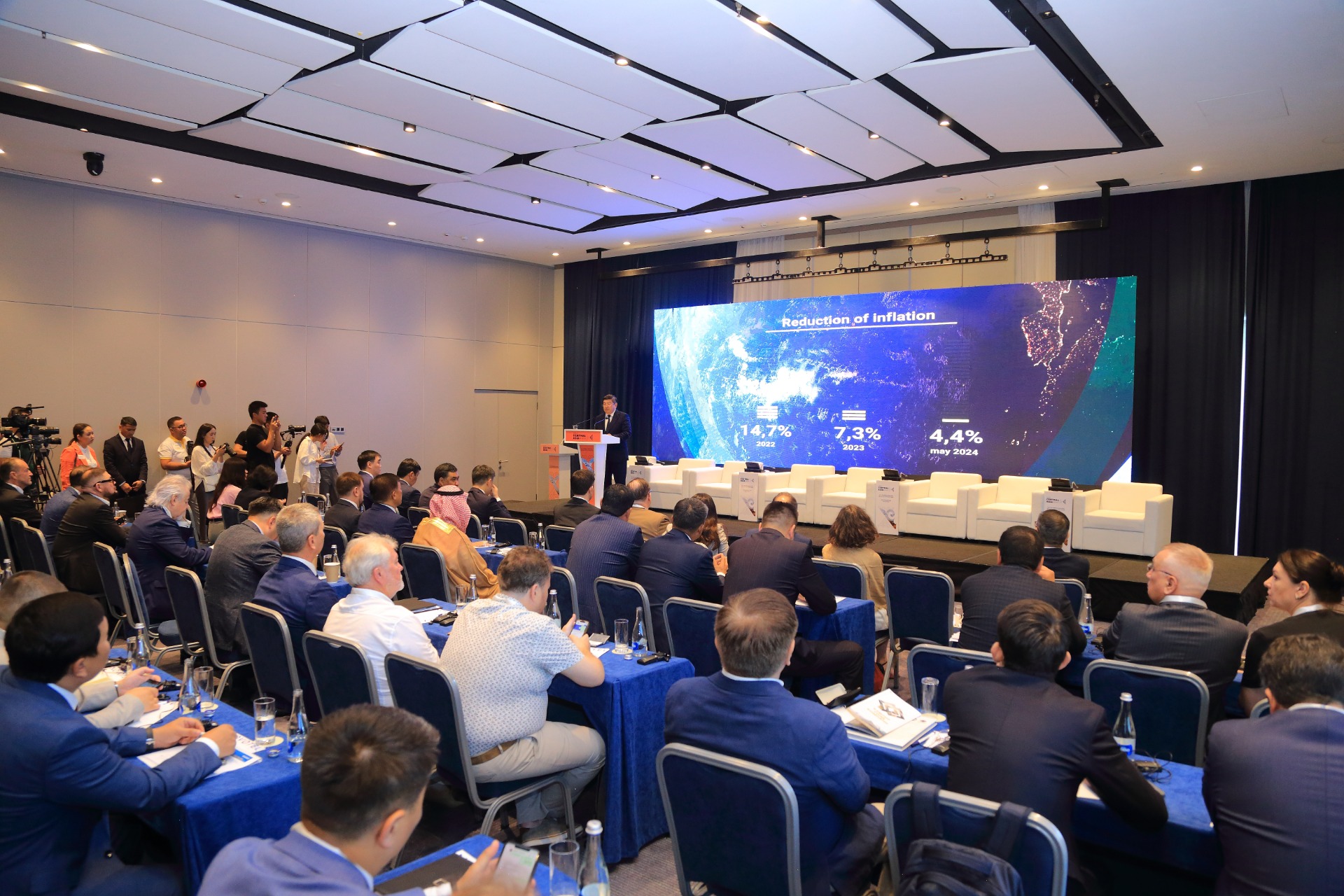
The first plenary session speakers
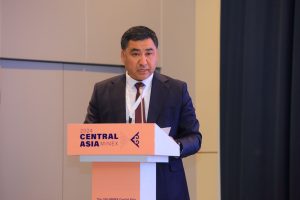
Daniyar Amangeldiev
Daniyar Amangeldiev, Minister of economy and commerce of the Kyrgyz Republic spoke about the importance of mining industry in the economic development. The country boasts over 100 types of raw materials, providing favourable conditions for launching localised production enterprises. The primary resources in Kyrgyzstan include 260 million tons of titanium ore form, over 616 tons of Gold, 2 million tons of copper ore, 10 million tons of Mercury, 320,000 tons of Antimony and tin. Amanjeldiev emphasized that tungsten, silicon, and rare earth metals are also abundant, with more than 51,000 tons of raw material and over 850 million tons in pure ore form. Additionally, uranium reserves exceed 23,000 tons.
The Minister highlighted prospects for iron extraction, with estimated reserves of 5.5 billion tons in ore form. The Kyrgyz government has allocated significant funds for geological exploration of new deposits, aiming to collaborate actively with investors, exchange technologies and expertise, and create new job opportunities. According to Amanjeldiev, ongoing efforts focus on developing and exploring new deposits, demonstrating Kyrgyzstan’s readiness to engage with investors for joint production ventures and job creation.
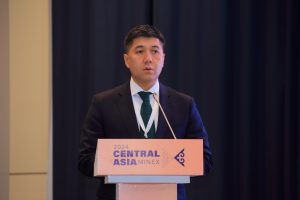
Melis Turgunbaev
Minister of Natural Resources, Ecology, and Technical Supervision Melis Turgunbaev has Discussed Plans for Developing Deposits Containing Uranium and Thorium. According to the minister, lifting restrictions on exploration and extraction of uranium-bearing deposits can improve the country’s economic situation. In Kyrgyzstan, six ore districts with critical minerals have been identified, along with more than 83 deposits and occurrences. However, most of these deposits contain uranium and thorium in small percentages. While uranium and thorium are present in very small amounts, they are not the primary focus. The government plans to purify these elements, but they are not considered competitive assets.
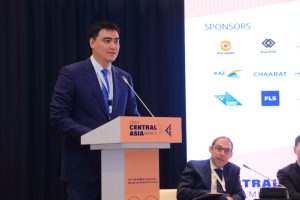
Iran Sharkhan
Iran Sharkhan, Vice-Minister of industry and construction Republic of Kazakhstan presented on the country’s significant progress in attracting foreign investment in mining, with private investments amounting to over 436 billion tenges (approximately $1 billion USD) from 2018 to 2023. The country boasts over 9,000 mineral deposits and has adopted a new mining model inspired by Western Australia's approach. To attract private investment in exploration, Kazakhstan has implemented a 'first-come, first-served' licensing system and adopted KAZRC (CRIRSCO) reporting standards for new deposits. These changes have led to a significant increase in private investments in exploration since 2018. The government has also launched an online platform for subsoil use rights and introduced electronic auctions for exploration rights, successfully attracting major foreign mining companies. The speech concludes with an announcement about an upcoming auction for the right to mine extraction at 23 deposits, including coal, gold, phosphates, and other minerals.
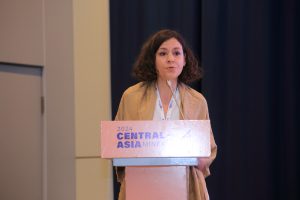
Peline Atamer
Peline Atamer, Head of Unit, Organisation for Economic Co-operation and Development presented on the opportunities for greener practices in the mining sector in Central Asia.
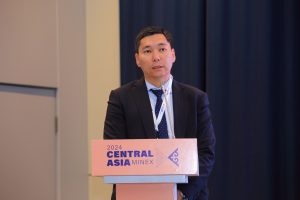
Azamat Ibraimov
Azamat Ibraimov, Associate Director, Senior Banker of the European Bank for Reconstruction and Development offered a comprehensive overview of the EBRD and its involvement in the natural resources sector, with a particular focus on mining. Recent case studies highlight the EBRD's diverse portfolio, featuring investments in companies like Esan Eczacibasi in Turkey, Zeppelin GmbH in Uzbekistan and Armenia, Voskhod Chromium in Kazakhstan, and Wagner Asia Equipment in Mongolia. Through these investments, the EBRD aims to promote sustainability, energy efficiency, and skills development in the mining sector, contributing to the overall development of market economies in its regions of operation.
Due to faster warming than in other regions of the world, subsoil users in Central Asia will have to implement climate change and water management strategies much earlier. According to Harvard University studies, energy diversification is key to effectively addressing climate change and meeting the region’s growing energy demand. Energy resources account for approximately 30% of the total operating costs of mining enterprises. Companies can reduce energy consumption at existing facilities by 15-20% through effective energy management programs and achieve 50% energy savings in the design of new mines. Water is widely used in both underground and surface mining, about 40% in ore processing, about 40% in tailings dams and about 20% in dust control. To ensure the sustainability of mining and processing across the region, mining enterprises must develop water and climate management programs and integrate the best available practices and technologies. To encourage investment in renewable energy sources, local governments should provide long-term assurances and extended planning timelines.
Open Session photos
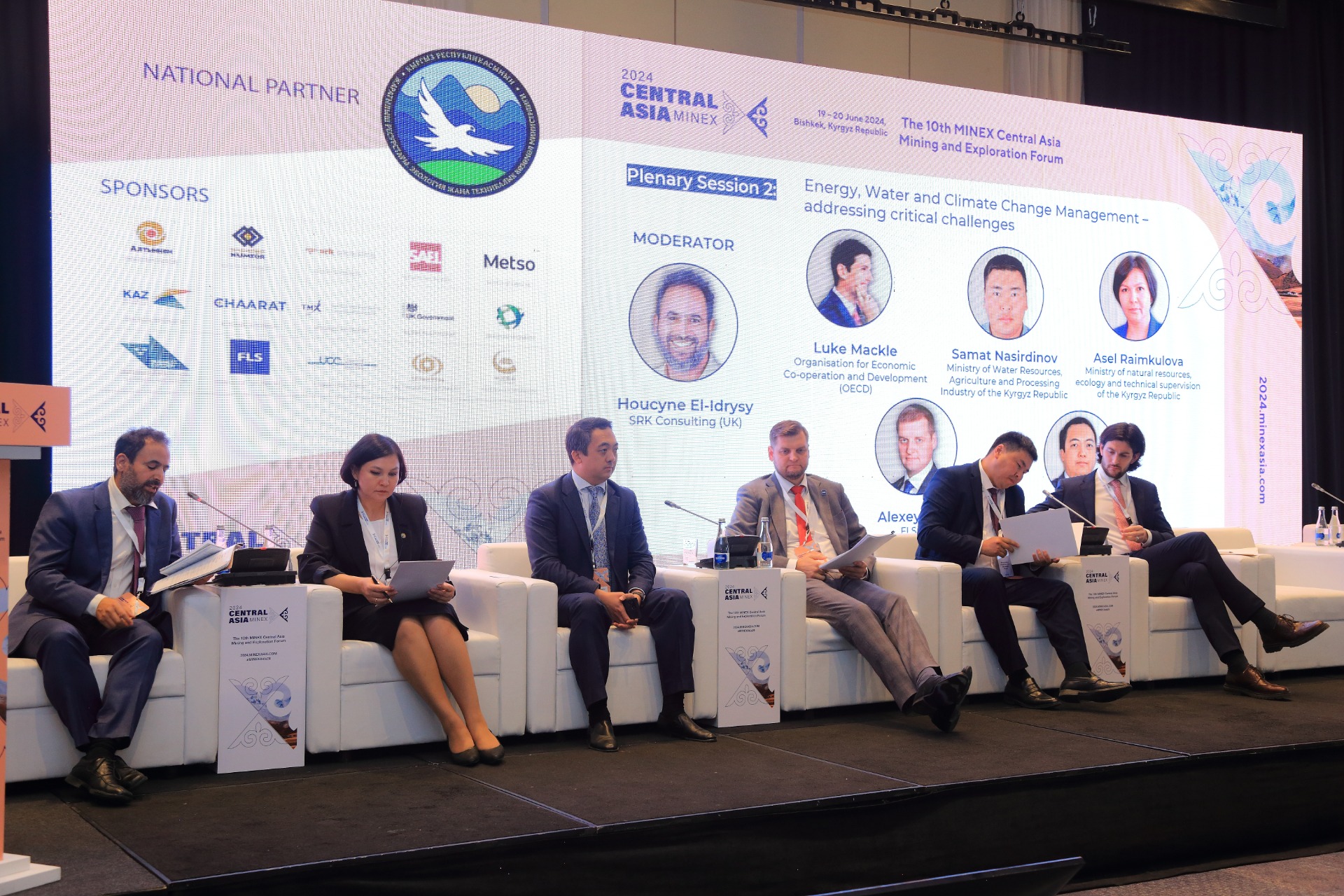
The second plenary session speakers
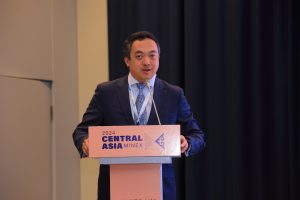
Yerlan Ramazanov
Yerlan Ramazanov, Associate Director, Regional Head Energy, Eurasia, Middle East, Africa of the European Bank for Reconstruction and Development discussed why coal is wrong path of long-term energy security in the country. The presentation emphasised the importance of a proactive green energy transition for the Kyrgyz Republic's national welfare. It highlighted the country's severe air pollution problem, with PM2.5 concentrations 5-7 times above WHO recommendations, leading to significant health impacts. The presentation compared renewable energy investments with fossil fuels, noting that for every dollar spent on fossil fuels, $1.80 is now invested in green energy. It emphasises the cost competitiveness of renewables, projecting that new onshore wind will be cheaper than existing coal plants within a year, and utility-scale solar will achieve competitiveness by 2027. The presentation concluded by highlighting the risks of carbon lock-in and stranded assets associated with long-term investments in fossil fuels, contrasting this with the declining costs of solar and onshore wind due to technological advancements and local supply chain development.
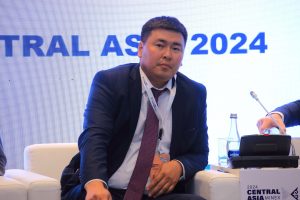
Samat Nasirdinov
Samat Nasirdinov, Deputy Minister, Ministry of Water Resources, Agriculture and Processing Industry of the Kyrgyz Republic presented on carbon sequestration through climate investments in forests and pastures in the Kyrgyz Republic. According to Nasiridinov, the project aims to sequester approximately 19 million tons of carbon, equivalent to 20 years of reduced emissions. This would account for 7.6% of the country’s total emissions and 22.6% of agricultural emissions, contributing to Kyrgyzstan’s national commitments to reduce greenhouse gas emissions. The project’s key components will include strengthening natural resource management using up-to-date data, “green” investments in forests and pastures, and developing value chains and climate monitoring systems. The target regions for the project are Jalal-Abad, Naryn, Ak-Tal, Osh, and Uzgen.
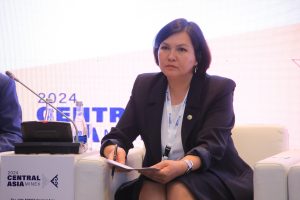
Asel Raimkulova
Asel Raimkulova, Deputy Minister of Natural Resources, Ecology and Technical Supervision of the Kyrgyz Republic, addressed the issue of environmental oversight of mining companies. Kyrgyzstan has over 100 companies engaged in mineral extraction and processing. The Ministry of Natural Resources oversees their compliance with environmental and industrial safety requirements.
However, the deputy minister emphasised that public reviews are rare due to limited financial resources.
Mining companies impacting the environment must:
• Conduct environmental impact assessments;
• Develop environmental protection measures;
• Implement environmental monitoring programs.
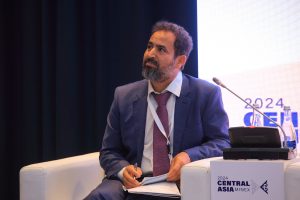
Houcyne El-Idrysy
Houcyne El-Idrysy, Principal Consultant (Water Management) SRK Consulting (UK) addressed topical issues in water resources and mining in Central Asia, focusing on challenges and future impacts. Houcyne emphasised the need for sustainable water management practices, climate change risk assessments, and collaboration between stakeholders to address water-related challenges in the mining sector.
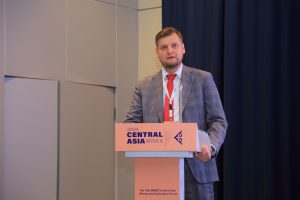
Alexey Kutilin
Alexey Kutilin, Vice President of Capital Sales, FLSmidth concluded the session with the presentation of the best available solutions for mineral processing – enhancing productivity and sustainability. FLSmidth is active in areas such as equipment supply and implementing the latest technological solutions to increase production indicators.
Central Asia is emerging as a global mining powerhouse, endowed with abundant rare earth metals and critical materials essential for the energy transition. Leading mining companies in the region leverage cutting-edge technologies and data-driven insights to optimise operations, enhance efficiency, prioritise sustainability, and navigate challenges, showcasing Central Asia as a frontrunner in the global mining landscape.
Open Session photos
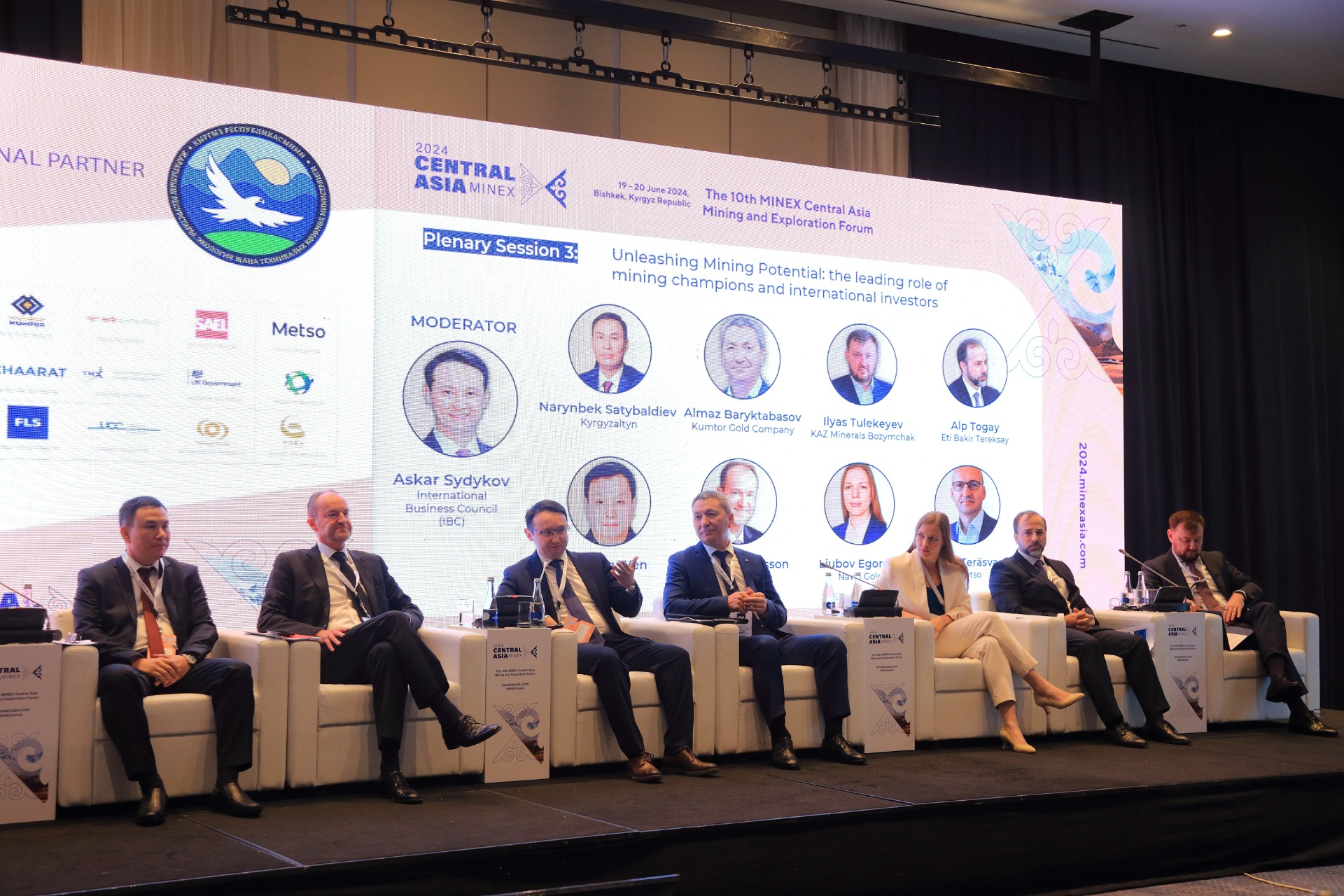
The third plenary session speakers

Narynbek Satybaldiev
Narynbek Satybaldiev, Deputy Chairman of the Board, Kyrgyzaltyn presented the company’s main assets and achievements. Kyrgyzaltyn, a national company with private ownership, has seen significant growth and success in recent years. The company's assets reached 89.3 billion som (1.0 billion USD) by the end of 2023, and it maintains its status as a reliable supplier to the London Bullion Market Association. Kyrgyzaltyn has experienced substantial profit increases, with net profits rising from 2.8 billion som in 2019 to 34.7 billion som in 2023. The company has expanded its operations, including gold and silver refining, gold mining, and the development of various subsidiaries. Kyrgyzaltyn is also actively involved in implementing reforms in the mining sector and exploring new opportunities in critical minerals and electrometallurgy.
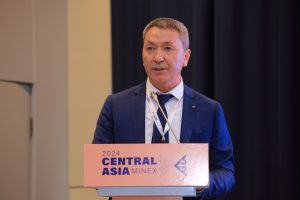
Almaz Baryktabasov
Almaz Baryktabasov, President (Chairman of the Board) Kumtor Gold announced at the session that the company’s total gold sales revenue for 2022-2023 reached $1.8 billion. This figure represents a significant increase from the previous year’s revenue of $1.03 billion. According to Baryktabasov, the company’s gold production for 2022-2023 reached 30.8 tons, with a profit of $674.2 million. The company also paid out $140 million in dividends in 2022 and plans to pay out $151.3 million in 2023. In 2024, the company plans to produce 12.5 tons of gold. Baryktabasov highlighted the company’s efforts to optimize costs and reduce expenses, including the introduction of an automated system for tracking fuel and lubricants, which saved $17 million in 2023. The company is also investing in new projects, including the development of the Togolok gold deposit, which has reserves of 17 tons, and the Jangartskaya area, which is located 200 kilometers from the Kumtor mine. Additionally, the company has started a project to extract gold from tailings, which is expected to recover an additional 55-65% of the gold. Baryktabasov emphasized that the company is committed to developing and implementing new projects, and is working to increase its gold production and revenue.
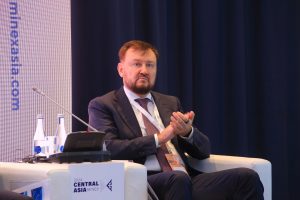
Ilyas Tulekeyev
Ilyas Tulekeyev, General Director, KAZ Minerals Bozymchak announced that the Bozymchak mine is undergoing construction and preparation for the launch of an underground mine. The project is the largest Kazakhstani investment project in the Kyrgyz Republic, with investments totalling around $450 million. The company employs over 1,300 people, 97% of whom are citizens of the Kyrgyz Republic. Tulekeev noted that the company has made significant contributions to the socio-economic development of the republic, with around 15 billion soms transferred to the state budget. The construction and launch of the underground mine are valued at over $110 million, with around $60 million already invested.
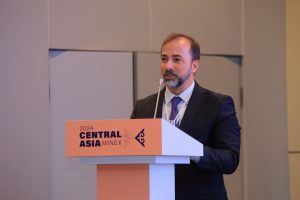
Alp Togay
Alp Togay, General Manager, Eti Bakir Tereksay presented an overview of the Tereksay gold mining project in Kyrgyzstan, developed by a joint venture between Turkish company Eti Bakır and Kyrgyz company Kyrgyzaltyn. The project began in 2015 when the company won a government tender with a $20 million signature bonus, receiving a mining licence in January 2016. The company's history includes the reconstruction of an enrichment plant in 2016-2017, followed by the construction of a new gold extraction factory from 2020 to 2022. The new factory, using Carbon In-situ Leach technology, began operations in February 2022 and has a processing capacity of 1.3 to 1.7 million tonnes of ore per year. The project encompasses multiple mining assets, including the Terekkan open-pit mine, Terek South open-pit, and Perevalnoye underground mine. However, some operational challenges have been faced due to higher-than-expected sulphide and arsenic content in the ore from certain mines. As of 31 May 2024, the net debt stands at $251 million. The project is show-cased as successfully turning an idea into reality, creating value for all stakeholders, thanks to government support, robust investors, and capable management.
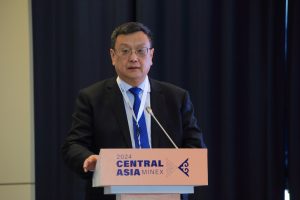
Yafeng Wen
Yafeng Wen, Chairman of the Board, Altynken presented the corporate video featuring one of the largest underground gold mine developed in Kyrgyzstan by Chinese Zijing Mining and Kyrgyzaltyn.
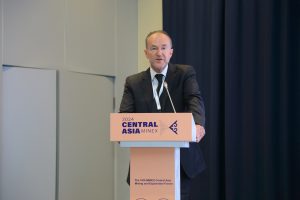
Martin Andersson
Martin Andersson, Executive Chairman, Chaarat Gold Holding outlined the company’s ambitions to become a leading emerging markets gold company. Chaarat Gold Holding is focused on developing two significant projects in the Kyrgyz Republic: Tulkubash and Kyzyltash. Tulkubash, the first stage of development, is nearing production with a target of approximately 95,000 ounces of gold per annum. The company has signed a non-binding term sheet for $150 million in financing and expects first gold production in 2025. Notably, Chaarat has completed key milestones, including signing EPC, mining, and operations and maintenance contracts with PowerChina. The second stage, Kyzyltash, is a larger project in development, targeting around 300,000 ounces of gold production annually. This project boasts substantial resources of about 5.4 million ounces of gold and is currently undergoing metallurgical testing to determine the optimal processing method.
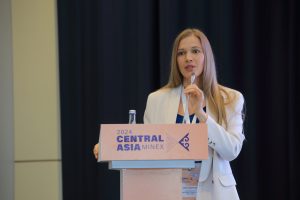
Liubov Egorova
Liubov Egorova, Director for Mineral resources, Navoi Mining and Metallurgical Company presented an overview of the leading gold producer in Uzbekistan. The company boasts a substantial resource base of 148 million ounces of gold, placing it among the top global producers. NMMC operates several mining clusters, including Muruntau, which is its largest, along with Kokpatas-Daugyztau, Zarmitan, and others. The company's strategy focuses on increasing production at existing assets, implementing an intensive exploration programme on new licence areas, and obtaining JORC assessments for all assets. NMMC aims to grow its production by 15% in the near term and potentially 10-15% in the medium term. Looking ahead, NMMC has ambitious plans for growth, with a development programme extending to 2030. This includes expanding mining operations, increasing processing capacities, and conducting intensive geological exploration to augment its resource base and discover new deposits.
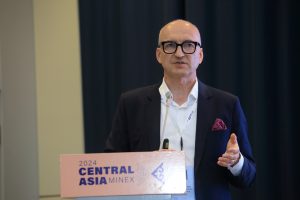
Markku Teräsvasara
Markku Teräsvasara, President, Minerals, Metso concluded the session with the presentation of the company’s achievements in driving sustainability in the mining and metals with Planet Positive technologies. A notable feature is the Planet Positive Flowsheet tool, which allows for holistic assessment of circuit options and equipment selection based on various factors including CO2 emissions, energy and water consumption, and operational costs. Teräsvasara highlights Metso's capabilities in the gold mining sector, where the company offers comprehensive solutions from conceptual stages to commercial operations. The presentation also touches on Metso's involvement in the battery minerals value chain, supporting the growing electric vehicle industry.
While Central Asia offers immense mineral potential, challenges such as infrastructure development, evaluation of investment projects using internationally accepted standards and investment in geological exploration should be addressed to fully capitalise on the region’s resources. The final session of the day facilitated discussions on tangible actions and showcased examples of how international collaboration with local and international financiers is unlocking critical raw materials potential across Central Asia.
Open Session photos
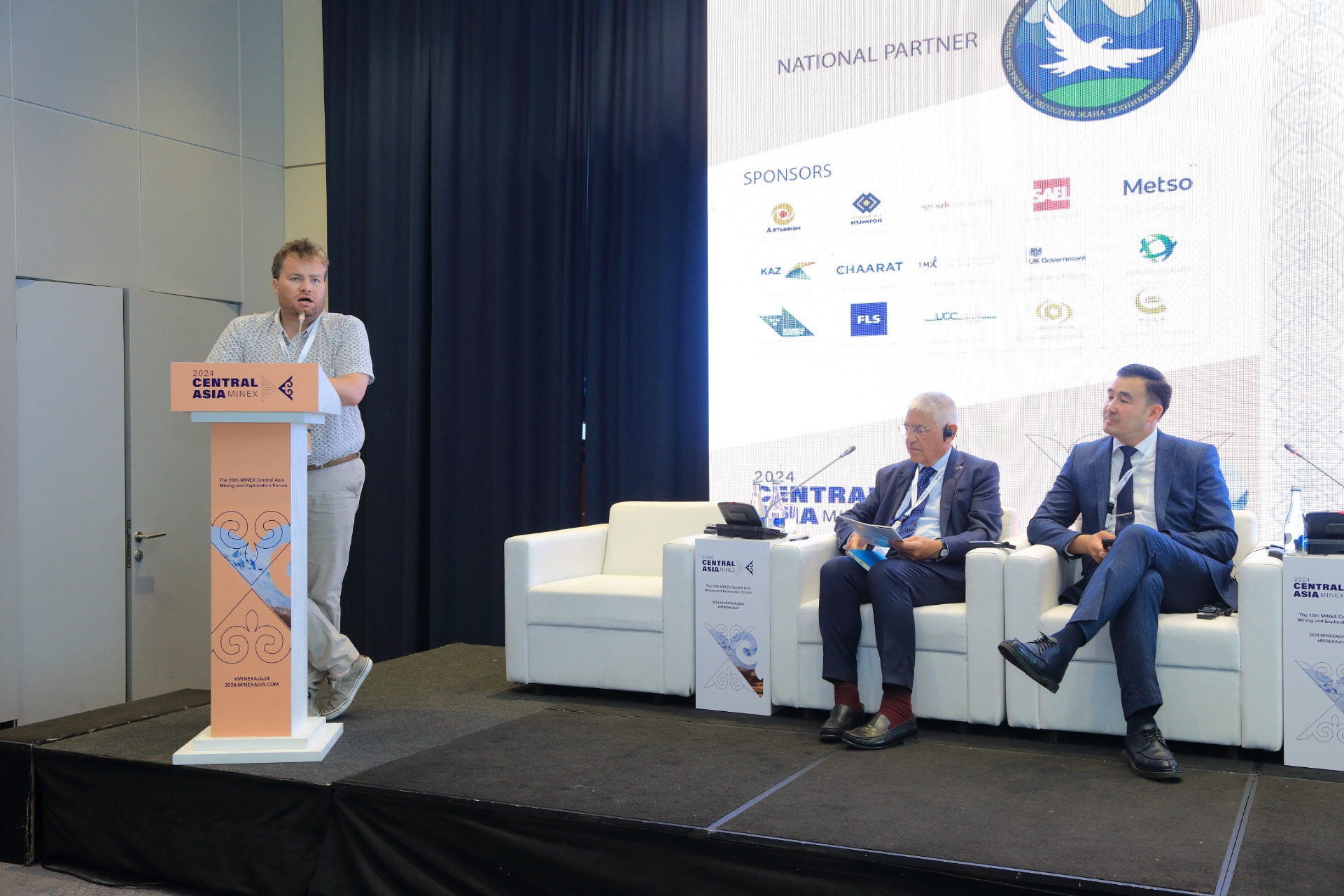
The fourth plenary session speakers
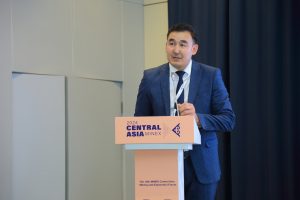
Medetbek Nazaraliev
Medetbek Nazaraliev, CEO, Kyrgyz Stock Exchange talked about the role of the Exchange as an intermediary between the state, companies and investors. The KSE, established in 1995, has undergone significant developments, including foreign shareholders joining in 2000 and the state becoming a shareholder in 2017. The exchange's trading volume has grown substantially, reaching 913 million USD by June 2024. The KSE offers various listing categories and tax benefits for listed securities. It has expanded into sustainable development, featuring green bonds and social bonds, with mandatory sustainability reporting. The exchange has also ventured into precious metals trading, offering gold and silver in various forms. The KSE aims to simplify export/import processes and develop mechanisms for precious metals trading to enhance market accessibility and transparency.
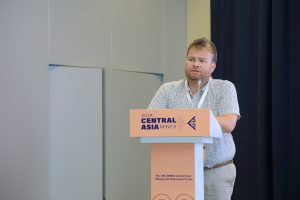
Arkady Rogalsky
Arkady Rogalsky, Counselor, Kyrgyzgeology presented on the current status of mineral resources reporting in the Kyrgyz Republic. The speaker outlined the history of the Kyrgyz geological service and explained the different categories of reserves and resources used in the country's classification system. He also compares these to international standards and proposes a new unified classification system for Kyrgyzstan. The presentation also covers the role of the State Commission on Reserves in Kyrgyzstan and suggests improvements to the current system, including the involvement of independent experts and the creation of self-regulating organisations for experts.
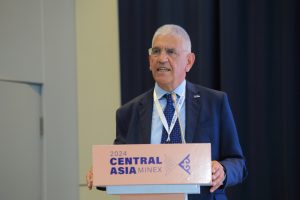
Graham Dallas
Graham Dallas, Head of Business Development, EMEA, Toronto Stock Exchange & TSX Venture Exchange presented on behalf of the world’s most prominent financial market for mining and extractive businesses. The exchanges' dominance in the mining sector was emphasised, noting that it accounted for 36% of global mining equity capital raised between 2019 and 2023. The presentation compared TSX and TSXV's performance in the mining sector with other major exchanges, demonstrating their leading position in new listings, number of issuers, and equity capital raised. Finally, speaker highlighted that C$4.4 billion in equity capital was raised by mining companies on TSX and TSXV in the first four months of 2024, further cementing the Exchnagce position as a key player in global mining finance.
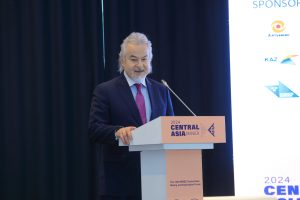
Han Ilhan
Han Ilhan, CEO and Director of the Board, Aldridge Minerals and Tethys: Trans-Eurasian Gateway offered a controversial presentation on the derisking the Critical Raw Materials Initiatives through Strategic Partnerships. Ilhan argued that derisking encompasses not only technical aspects but also financial and country/jurisdictional components. The technical derisking involves various elements throughout the mine lifecycle, including permits, studies, and environmental considerations. Financial derisking is discussed in terms of both public and private finance, with emphasis on the need for non-traditional project finance instruments. Country and jurisdictional derisking addresses political risks, investment climate, and social licence to operate. The speaker concluded by stressing the importance of derisking CRM initiatives, emphasising that it is not merely about exchanging capital for resources, but rather about collectively achieving sustainable development goals for present and future generations.Mining companies impacting the environment must:
• Conduct environmental impact assessments;
• Develop environmental protection measures;
• Implement environmental monitoring programs.
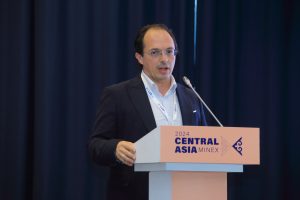
Remi Piet
Remi Piet, Senior Partner, Embellie Advisory concluded the session with the talk on Sustainable investment and ESG best practices in the mining sector. The presentation emphasises that investments lacking robust ESG programmes may be perceived as less progressive and risk-conscious, potentially impacting their value. It notes that strong ESG propositions are correlated with higher stock returns and improved financial metrics. Piet presented an example of a comprehensive ESG framework called Towards Sustainable Mining (TSM). In his presentation he argued that sophisticated investors are particularly concerned with the social licence to operate as a significant financial risk. Finally, he advised companies to tailor their approach for investors and to strive for best practices to attract long-term institutional investors.
The first day of the Forum concluded with the signing of the Partnership agreements and MoUs between the following companies and organisations:
Gala Dinner
The first day of the Forum came to a close with a Gala Dinner that transported delegates back in time to the ancient nomadic traditions of Central Asia.
A pre-dinner drinks reception allowed guests to mingle and sample local teas and snacks that have been sustaining travellers on the Silk Road for centuries. The highlight of the evening was the unique teas infused with horse and camel milk, served by hosts dressed in traditional attire. The dinner that followed was a culinary fusion of national dishes, prepared using molecular gastronomy techniques that blended traditional cuisine with modern twists. The evening's entertainment, featuring folk music, dancing, and sword fighting, added to the festive atmosphere, reminiscent of the national festivals celebrated in Kyrgyz Republic. The Gala dinner not only introduced delegates to local customs and culture but also provided a relaxed setting for international and local delegates to connect and build relationships.
20 JUNE
SECOND
DAY
The second day of the Forum commenced with two country-focused sessions, where participants discussed the opportunities for companies from Sweden and the United Kingdom.
The Swedish mining excellence session was organised in partnership with Business Sweden – an enterprise jointly owned by the Swedish state and the Swedish business sector with a mandate and a mission to help international companies gain access to the Swedish market and help domestic ones utilise it as a platform for expansion.
Open Session photos
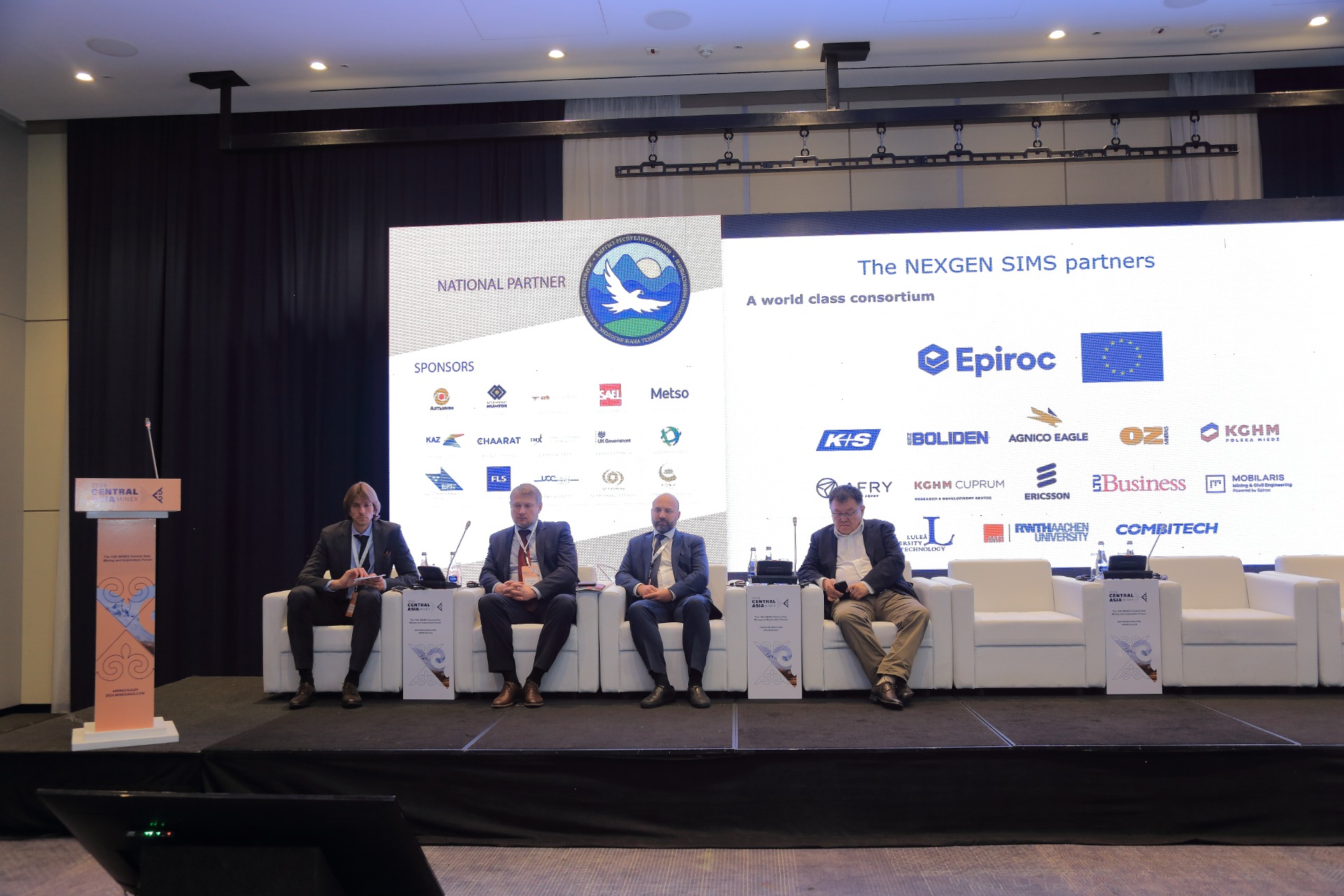
The Swedish mining excellence session speakers
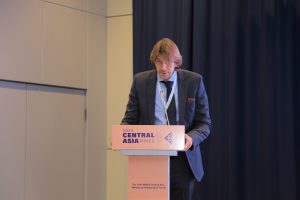
Mattias Lindgren
Mattias Lindgren, Trade Commissioner for Poland | Head of Türkiye | Country Manager for Poland, Romania and Eurasia, Business Sweden welcomed the delegates on behalf of the Swedish Government.
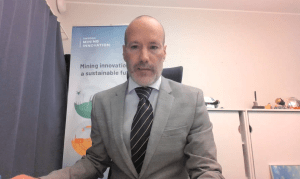
Lawrence Hooey
Lawrence Hooey, Technology and Innovation Manager, Swedish Mining Innovation presented remotely introduced the Swedish Mining Innovation program, an industry-led private/public partnership aimed at improving Swedish competitiveness and sustainability through research, innovation, and education. It operates on a technology readiness scale from laboratory to piloting and covers a wide scope including exploration, mining, metallurgical extraction, environment, and recycling. The program also supports projects in social areas, recognizing their growing importance in the context of increasing demand for metals in renewable energy and digitalisation.
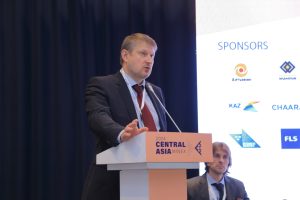
Denis Slepukhov
The presentation, delivered by Denis Slepukhov, Regional sales manager for mine hoisting machines in the CIS countries, ABB, introduced the ABB Ability™ Smart Hoisting, a system designed to enhance the productivity of mining hoists. The system aims to localise faults and perform predictive analysis to identify minor deviations that could lead to emergency shutdowns. The presentation detailed the key performance indicators (KPIs) monitored by the system, which are grouped into three main areas: hoist performance, availability, and safe braking system. These KPIs cover various aspects such as cycle times, emergency stops, brake system parameters, and hoist supervision metrics.
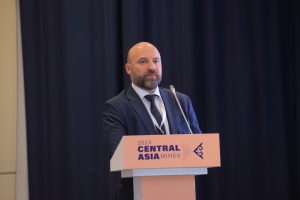
Anton Busygin
The last presentation “Bruxite wear steel for mining companies” was delivered by Anton Busygin, Managing Director, Olofsfors. Established in 1762, Olofsfors has a rich history in metalworking and has evolved to become a leading manufacturer of forestry machine tracks and wear parts for mining and construction equipment. The company's BRUXITE range includes various wear-resistant products such as wear strips, cutting edges, repair profiles, and wear plates. These items are designed for use in excavators, loaders, bulldozers, and other heavy machinery. The presentation highlights the unique production process that allows BRUXITE products to achieve a hardness of 500-600 HB (Brinell units).
The next country-focused session addressed Technology and Investment Partnership opportunities with British companies and Organisations.
Open Session photos
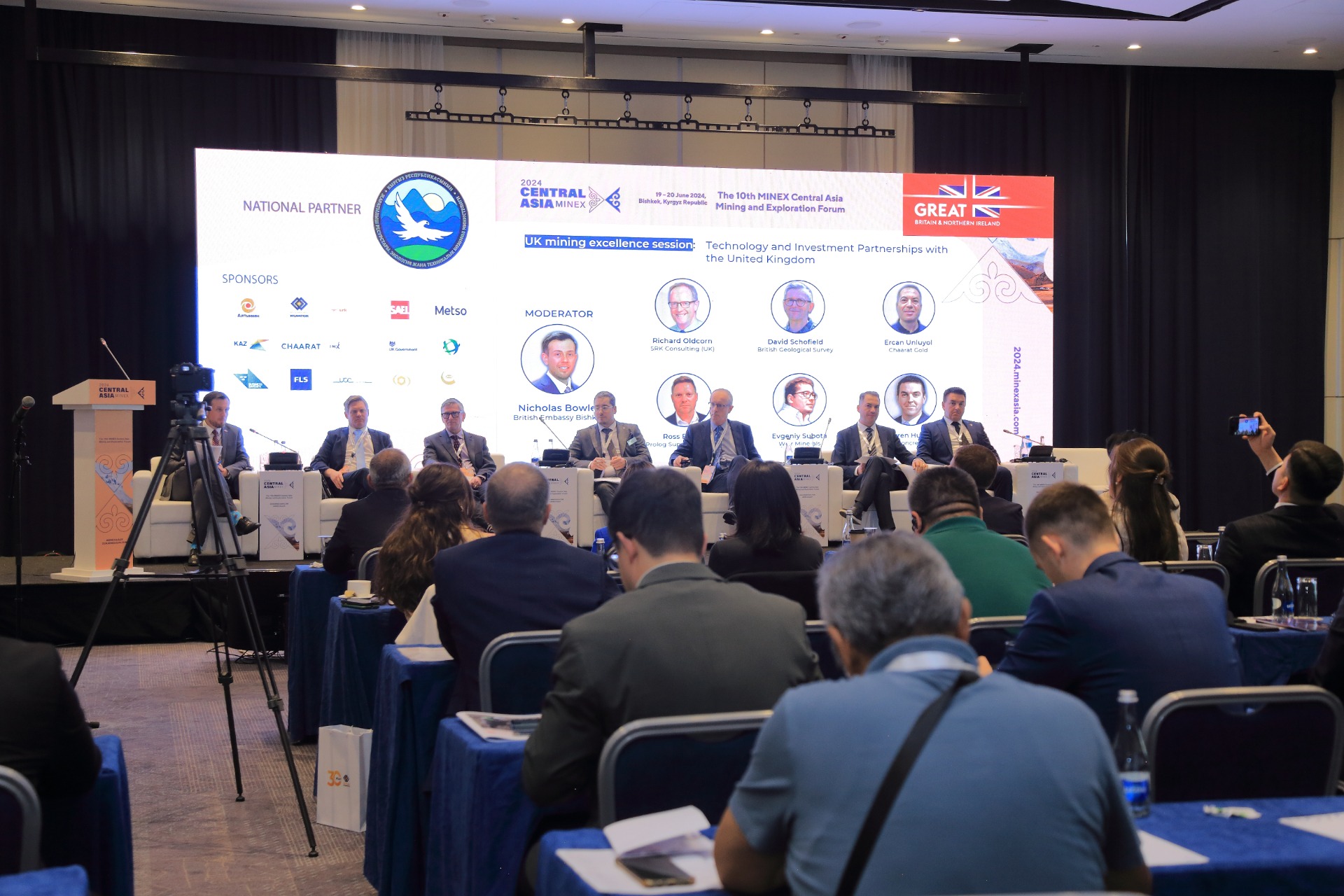
The UK mining excellence session speakers
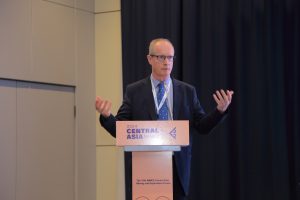
Richard Oldcorn
Richard Oldcorn, Corporate Consultant (Project Evaluation), Director, SRK Consulting (UK) presented a keynote “Navigating the pitfalls of project evaluation – the value of thorough due diligence and high-quality technical studies”. Oldcorn emphasised that good technical work is crucial for demonstrating a project's feasibility, economic viability, and sustainability, regardless of the commodity cycle stage. The talk highlights the importance of geological modelling and resource estimation as the foundation for all other aspects of a mining project. The presentation also touches on the growing importance of Environmental, Social, and Governance (ESG) factors in mining projects, noting that investor requirements and reporting standards are evolving rapidly in this area. Finally, Oldcorn discussed the distinctions between estimation guidelines, reporting codes, and reporting requirements, emphasising that investors expect reporting to align with international codes and be supported by high-quality technical work.
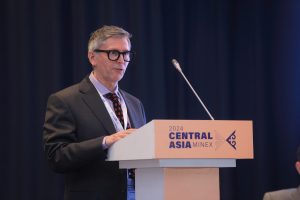
David Schofield
David Schofield, Director of National and International Geoscience, British Geological Survey delivered a presentation “Global Technical Assistance: Unearthing the Power of Geological Survey Organisations”. The presentation emphasises the importance of international engagement and partnerships to diversify supply chains globally, support UK companies in participating in responsible overseas supply chains and develop diplomatic and trade relationships to improve supply resilience. It also highlights the British Geological Survey's role in providing global minerals intelligence and advice. Schofield discussed the LiFT project, funded by the UK's Natural Environment Council, which investigates geological cycles of lithium in various mineralisation settings. The project focuses on understanding lithium brine and pegmatite deposits, as well as researching supply chains and the social and environmental impacts of mining. The presentation concluded by outlining the British Geological Survey's role in securing critical raw materials. This includes providing geoscience data, information, and capacity building to create strong institutions, build investor confidence, work with preferred partners, create opportunities for UK companies, and offer an alternative perspective to competitors.
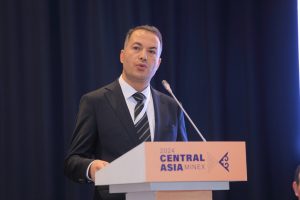
Ercan Unluyol
Ercan Unluyol, Technical manager, Chaarat Gold presented a case-study of Building a Leading Emerging Markets Gold Company in Kyrgyz Republic. The company's primary focus is on the Tulkubash oxide deposit, which has reserves of 647,000 ounces of gold, and the Kyzyltash sulphide deposit, boasting resources of 5,377,000 ounces. Chaarat has invested over £175 million into these assets, with £125 million allocated to Tulkubash and £50 million to Kyzyltash. The presentation highlights Chaarat's long-standing presence in Kyrgyzstan, dating back to 2002, and outlines its progress in project development, including extensive drilling activities and feasibility studies. It also emphasises the company's engagement with the Kyrgyz government and its participation in the British-Kyrgyz Business Council, which aims to facilitate partnerships and support investment in the Kyrgyz Republic.
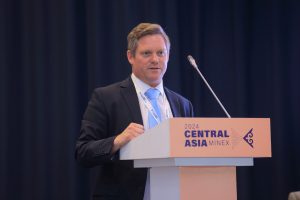
Ross Brodie
Ross Brodie, Managing Director, Prolog Supply & Services provided an overview of the Evolution of British Manufacturing and services in the global mining sector. The speaker provided case studies of notable advanced manufacturing companies and research institutions, showcasing Britain's ongoing commitment to innovation. The presentation concludes by discussing Prolog's vision for implementing change and improving productivity in the manufacturing sector.

Evgeniy Subota
Evgeniy Subota, Regional Sales Manager in Southern and Eastern Kazakhstan and Uzbekistan, Weir Minerals talked about the company development and capabilities. Weir Minerals emphasises their revolutionary grinding schemes, which can potentially increase copper recovery and reduce energy consumption. They also highlight a groundbreaking project for iron ore processing, featuring the world's first large-scale mill-free plant. The presentation showcased the company's service centre in Almaty, Kazakhstan, which opened in September 2022. This facility, spanning 3,315 square metres, provides assembly services for pumping equipment and rubber lining for concentrator equipment.
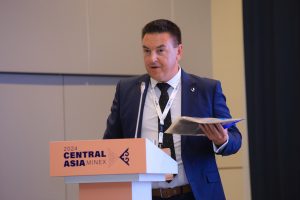
Darren Hughes
Darren Hughes, International Business Development Manager, United Concrete Canvas highlighted the key features of Concrete Canvas, including its rapid installation, ease of use, cost-effectiveness, and eco-friendly nature. It emphasises that CC can be installed up to ten times faster than traditional poured concrete solutions, offers significant cost savings, and provides a 63% reduction in embodied carbon compared to conventional concrete options.
The first tech session discussed Innovations for Developing a More Intelligent and Efficient Geological Exploration.
Open Session photos
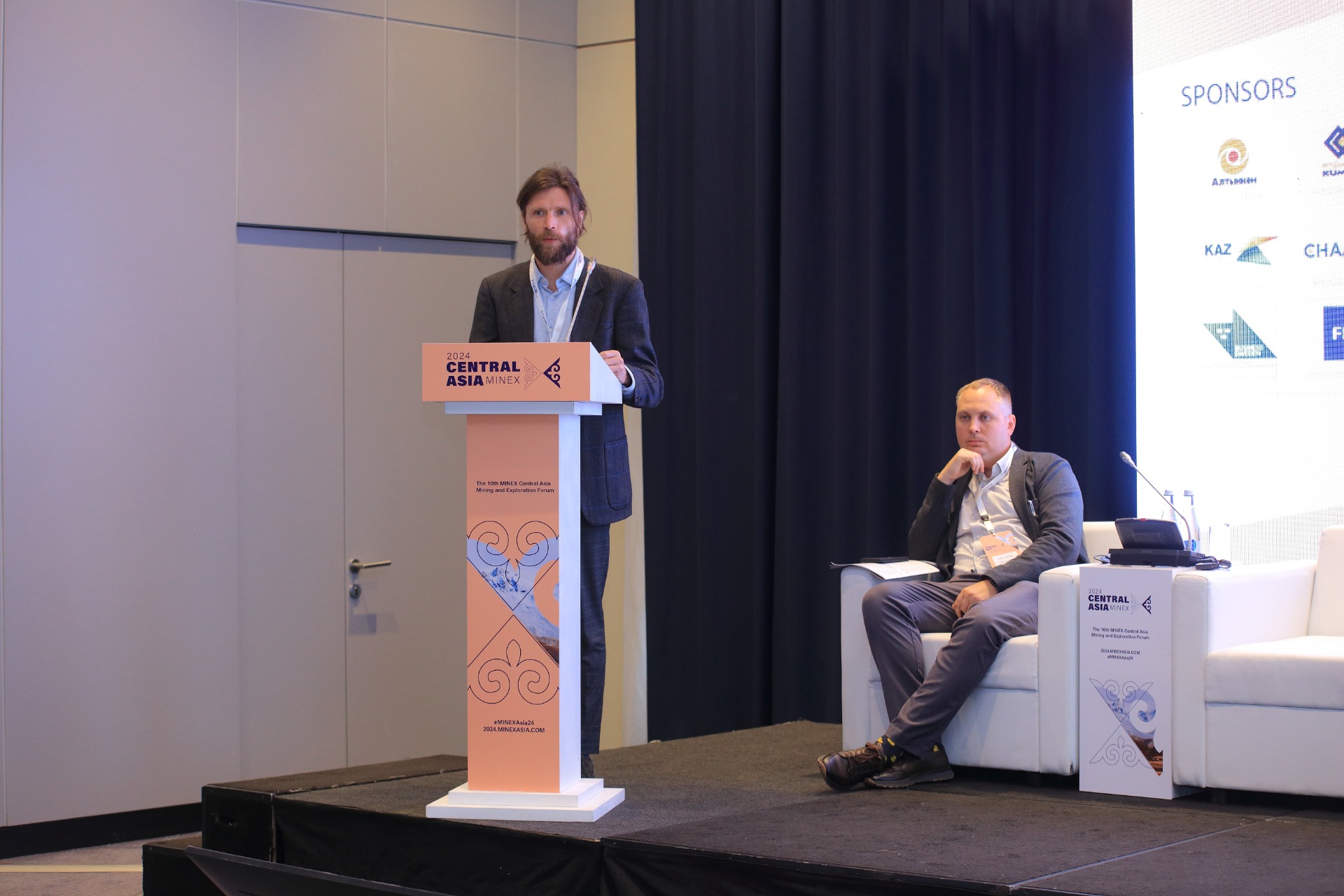
The first tech session speakers
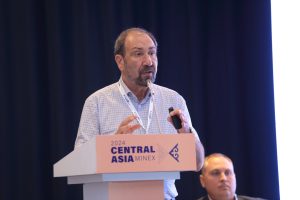
Pavel Babayants
Pavel Babayants, Chief geophysist, Aerogeophysica focused on the importance of integrated geophysical methods in exploration geology. Babayants showcased Aerogeofisika's advanced instrumentation, including a new universal multi-channel magnetometer, gamma-ray spectrometers, and airborne gravity meters. Particular emphasis was placed on their airborne electromagnetic systems, both frequency-domain (AGP-FEM) and time-domain (HoriZOND), highlighting their advantages in mineral exploration. The speaker stressed the need to shift from direct anomaly detection to predicting favourable exploration environments using a wide spectrum of modern data analysis technologies. This approach can significantly enhance the reliability and effectiveness of exploration geology, particularly for complex geological structures and concealed deposits.
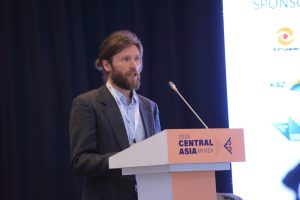
Ivan Kozyrev
Ivan Kozyrev, Geophysicist, AGT Systems Vostok presented case studies of the use of Modern geological exploration technologies. The presentation highlights various cutting-edge technologies, including UAV-based magnetometry using the MagArrow from Geometrics, which offers high sensitivity and ease of use. It also features UAV-based spectrometry using Medusa systems, which provide immediate results with high accuracy. Other UAV technologies mentioned include photogrammetry, LIDAR, hyperspectral cameras, and gas analysers. In gravimetry, the CG-6 Autograv is highlighted for its ease of use, accuracy, and reliability. The Horin Geophysical Software is introduced for processing geophysical data, offering various features for data analysis and visualisation.
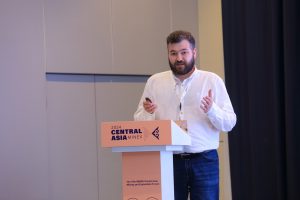
Kirill Bazhin
Kirill Bazhin, Director, Geodevice Kazakhstan highlighted Geodevice's complete equipment range for vertical seismic profiling (VSP) and marine seismic profiling (MSP), including winches and cables. He also showcased electrical exploration equipment, such as the ALMAZ Marine system for marine electrical exploration. The company also presents its MariMag marine magnetometer system, which can be configured as a gradiometer. Additionally, Geodevice offers radiometric equipment, including the SRP-20K borehole radiometer and the SRP-20 field pedestrian radiometer.
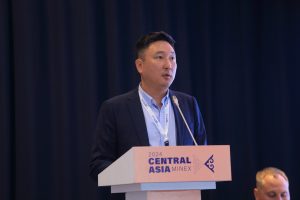
Erick Kanaev
Erick Kanaev, General Director, GEOSUPPORT presented on the collaboration between GEOSUPPORT and PAO "Pavlik". The case study details the use of ground-penetrating radar (GPR) technology in geological surveys, highlighting the advantages and applications of this technology in enhancing the efficiency and accuracy of mineral extraction processes.
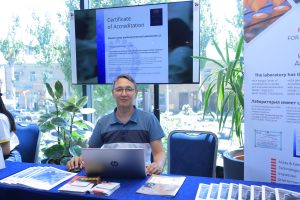
Emil Churmukov
Emil Churmukov, Chief Chemist, Stewart Assay and Environmental Laboratories provided an overview of Stewart Assay and Environmental Laboratories LLC, a testing facility located in Kara-Balta, Kyrgyzstan. Established in 1996, the laboratory specialises in geological sample analysis, utilising methods based on international standards such as ISO, ASTM, and EN. The facility boasts state-of-the-art equipment for various analytical processes, including sample preparation, fire assay analysis, ICP/AA analysis, and wet chemistry. It employs advanced technologies such as XRF spectrometers, chromatographs, and automated titrators. The laboratory also offers technological testing services for metallurgical research. A key feature of the laboratory is its robust quality control system, which includes participation in international proficiency testing programmes and the use of certified reference materials. The facility is accredited by both the Kyrgyz Accreditation Centre and UKAS to ISO/IEC 17025 standards.
Sponsored by Eradia the second technical session addressed modern practices for Improving Production Efficiency and Risk Management in the Mining Industry.
Open Session photos
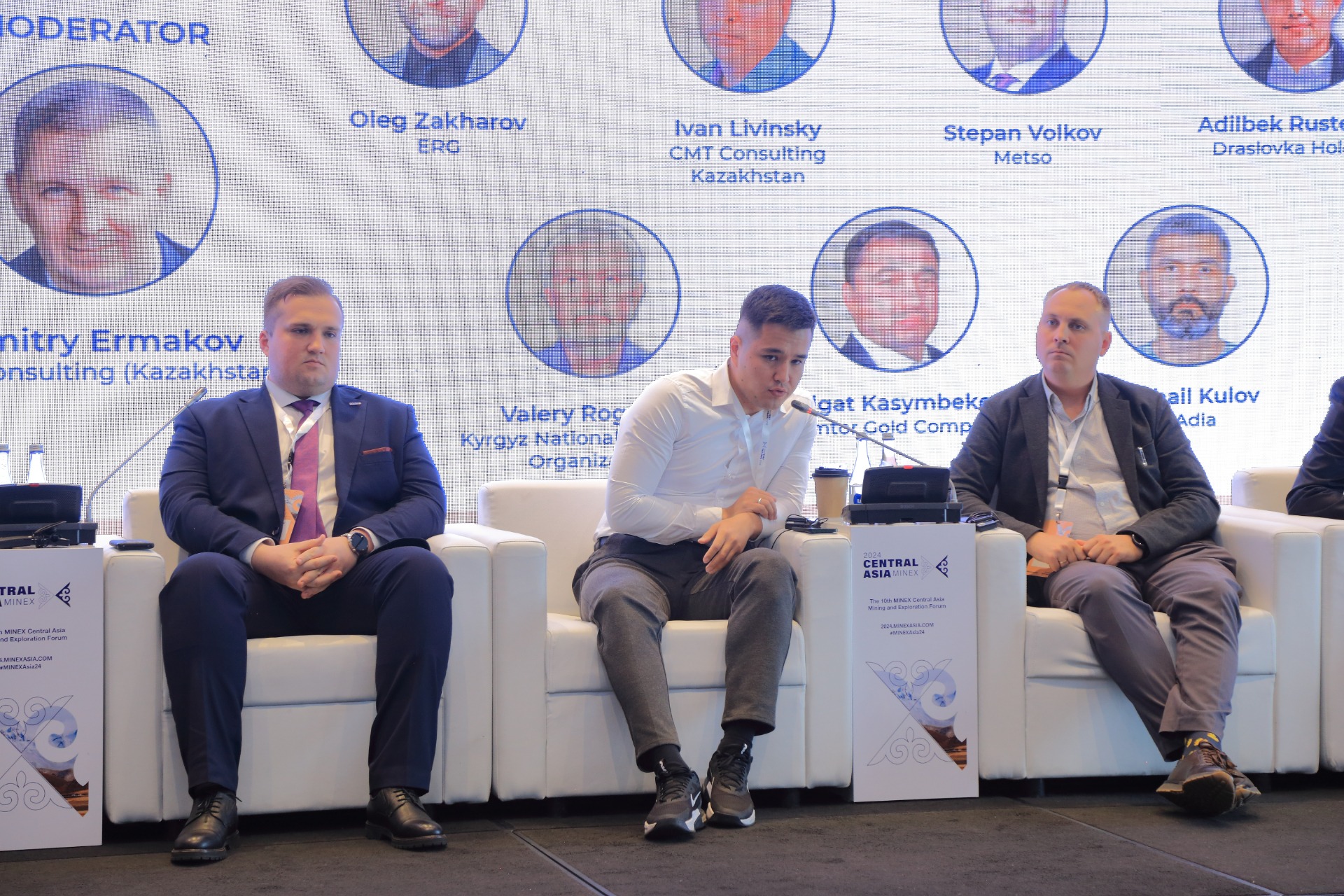
The second tech session speakers
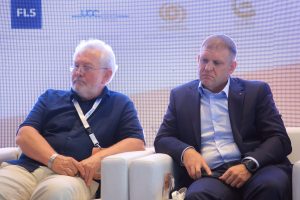
Oleg Zakharov
Oleg Zakharov, Director of Operational Efficiency, ERG discussed implementing a production system to enhance business efficiency at ERG, a global leader in mining and metallurgy operating in 20 countries. Emphasising operational efficiency over costly investments, Zakharov highlights the company's progress since 2019, the development phases of the production system, and the importance of regular assessments to ensure continuous improvement and success.
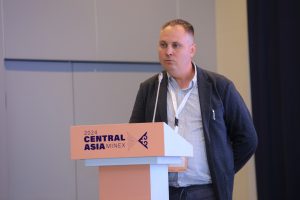
Ivan Livinsky
Ivan Livinsky, General director, Director by Geotechnics and Hydrogeology, CMT Consulting Kazakhstan focused on the assessment of geomechanical risks in designing and developing mineral deposits. Livinsky, with over 15 years of international consulting experience, introduced geomechanical risk assessment and its importance throughout the mining lifecycle, outlining methods such as Monte Carlo simulation and fault tree analysis, and emphasising the ALARP principle for acceptable risk levels. The presentation concluded with practical examples and the significance of involving all personnel in managing stability.
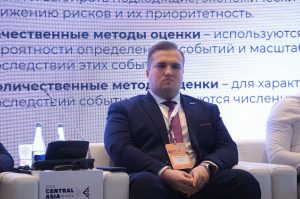
Stepan Volkov
Stepan Volkov, Director, Hydrometallurgy, Metso focused on optimising gold mining and processing, reducing operational costs, and improving environmental performance. Volkov outlined a technological scheme for gold ore processing and presented Metso's research centre services, emphasising their commitment to innovation and investment in research and development. A significant portion was dedicated to Metso's OKTOP® CIL reactor installation and the HiTeCC process for treating preg-robbing ores. Volkov also discussed elution technologies and highlighted the benefits of Metso's solutions, including improved performance, reduced energy consumption, and enhanced process control through digitalisation.
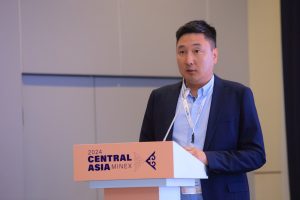
Adilbek Rustemov
Adilbek Rustemov, Eurasia Technology Leader, Draslovka Holding introduced GlyCat and GlyLeach, glycine-based leaching technologies developed by Draslovka Holding. GlyCat combines glycine with low concentrations of sodium cyanide, offering cost reductions and environmental benefits, such as improved gold and copper recovery and decreased mercury and arsenic dissolution. GlyLeach provides a selective method for extracting base and precious metals, with glycine recovery rates of 50-90%. The presentation highlighted the ESG benefits, commercial implementations, and client testimonials, concluding with an invitation for potential clients to conduct laboratory tests at Draslovka's facility in Perth, Australia.
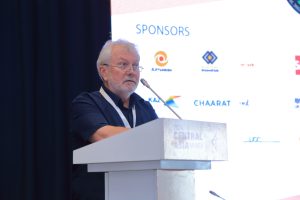
Valery Rogalsky
Valery Rogalsky, Chief geologist, Kyrgyz National Reporting Organisation discussed the importance of developing technogenic deposits in Kyrgyzstan for the global energy transition. He defined technogenic deposits, highlighted their environmental benefits, and acknowledged unavoidable environmental consequences of industrial mining. Rogalsky compared recent developments in Kyrgyzstan with Russian legislative norms, emphasising the economic advantages seen in Russia, such as increased industrial production, additional tax revenues, GDP growth, and reduced exploration costs, suggesting these benefits could be replicated in Kyrgyzstan.
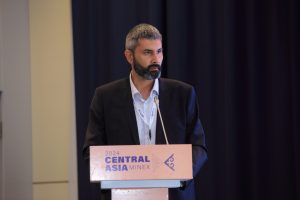
Mikhail Kulov
Mikhail Kulov, Commercial Director, ErAdia highlighted the company’s product range including electronic detonators, non-electric initiation systems, and both wired and wireless blast initiation control systems. The company emphasises its fully automated production processes, particularly for the 'SKAT' electronic detonators, which can produce 1,200 units per hour.
The Forum concluded with the presentation of investment projects presented by Arkady Rogalsky, Counselor, Kyrgyzgeology.
This presentation introduced the Kyrgyz Republic’s initiative to develop its critical raw materials (CRM) sector, particularly focusing on rare earth elements (REE). The state enterprise “Kyrgyzgeology” plans to rehabilitate the abandoned Kyrgyz mining and processing plant in Kemin, which operated from 1942 and produced various REE oxides. The project aims to tap into anthropogenic resources from four tailings, estimated to contain significant reserves of lead, zinc, silver, gold, and other valuable metals. The initiative is part of a broader national project to boost the economy through the extraction of polymetals and rare earth elements, as decreed by the President of Kyrgyzstan in January 2024. The presentation emphasises the importance of CRMs in modern technology and highlights the need for sustainable development of these resources to support high-tech industries and economic growth in Kyrgyzstan.

20-21 JUNE
SITE
VISITS
Following the successful conclusion of the MINEX Central Asia 2024 Forum, a series of site visits have been organised to give attendees an up-close and personal look at some of the region’s most innovative and advanced mining operations.
Stewart Assay & Environmental Laboratories > Kumtor Gold > Altynken > ErAdia
Engagement and Business Development opportunities.
Participants were able to engage in meaningful discussions with the managers of the local companies, ask questions, and gain a deeper understanding of the challenges and opportunities facing the Kyrgyz mining industry today, and discuss cooperation opportunities.

